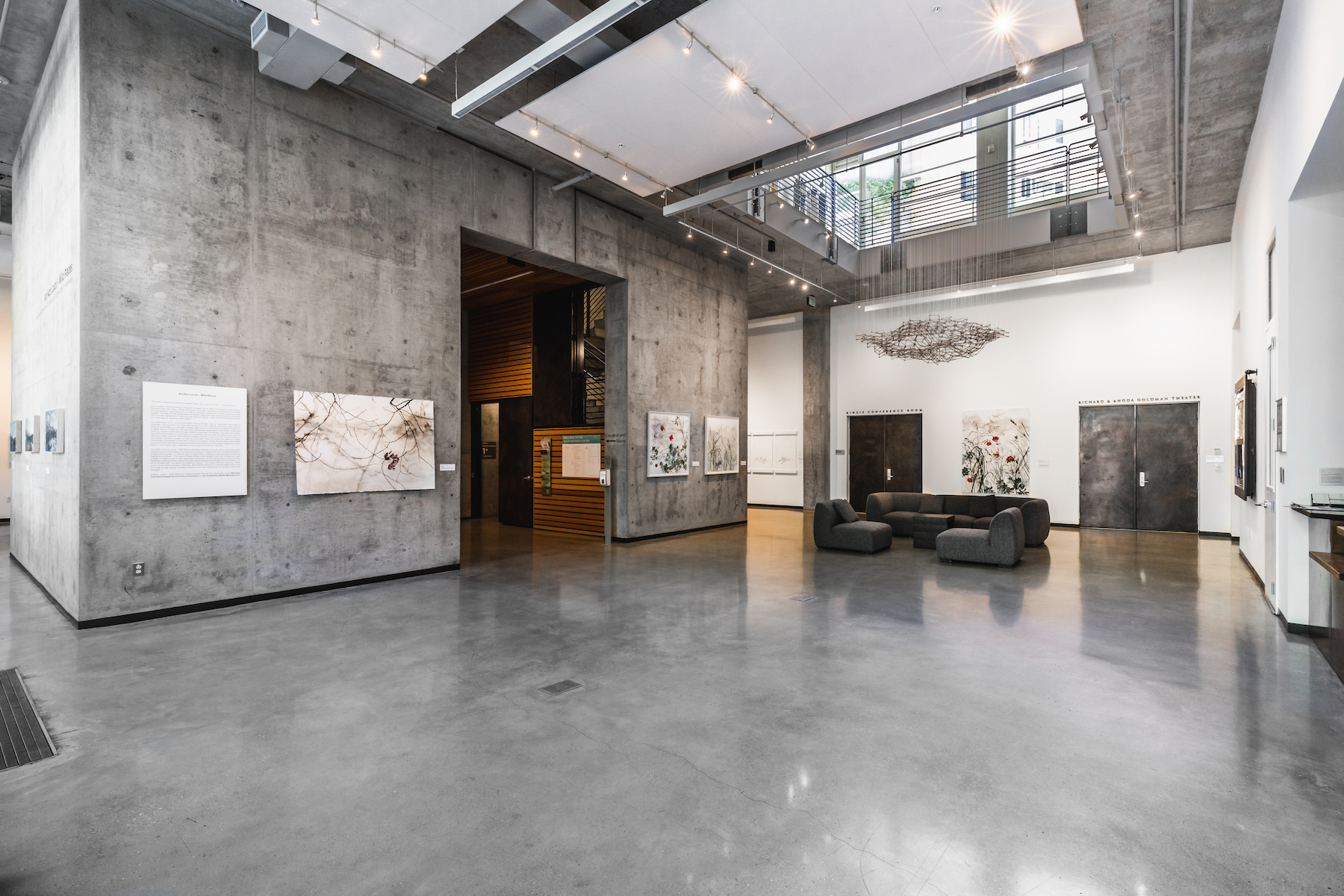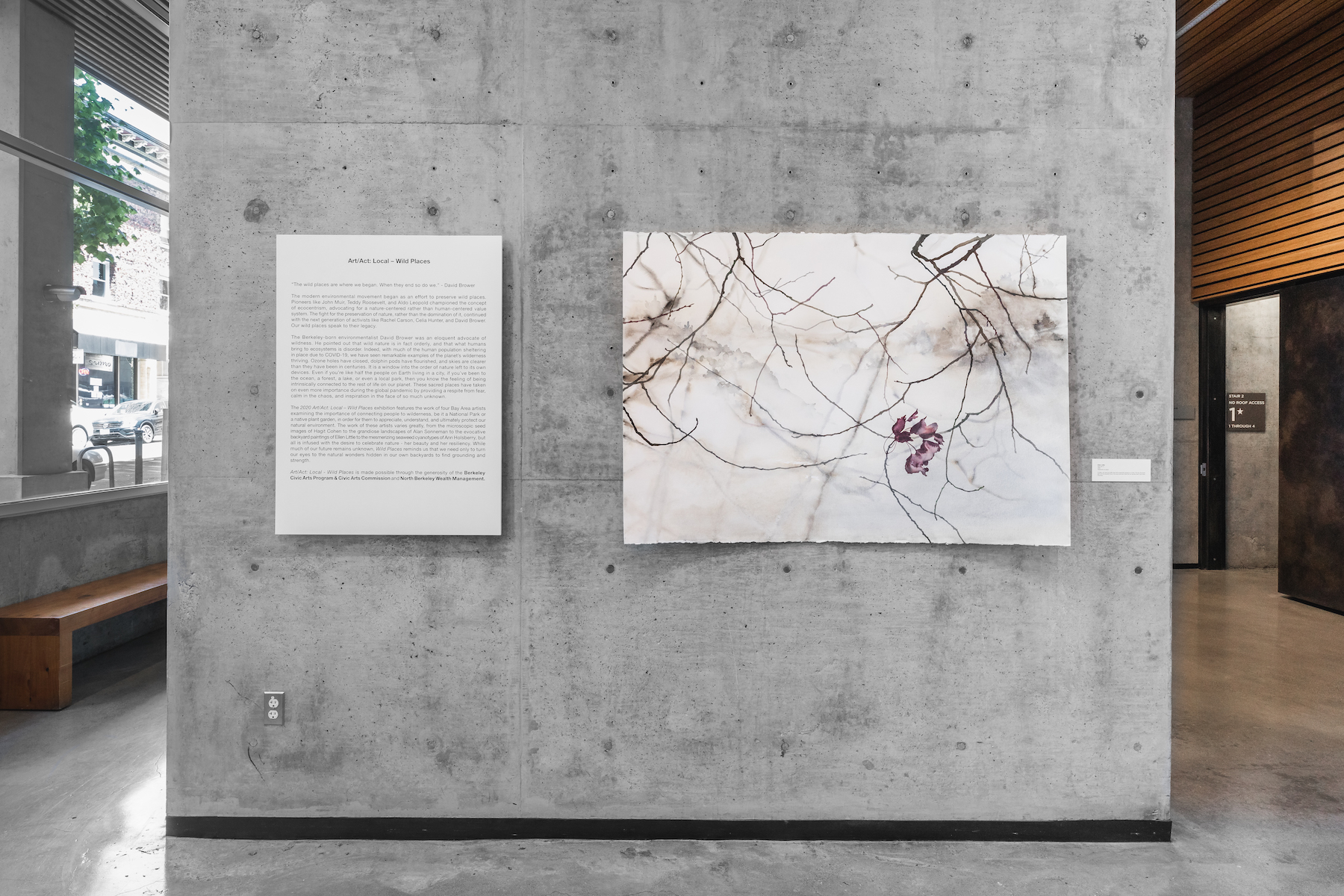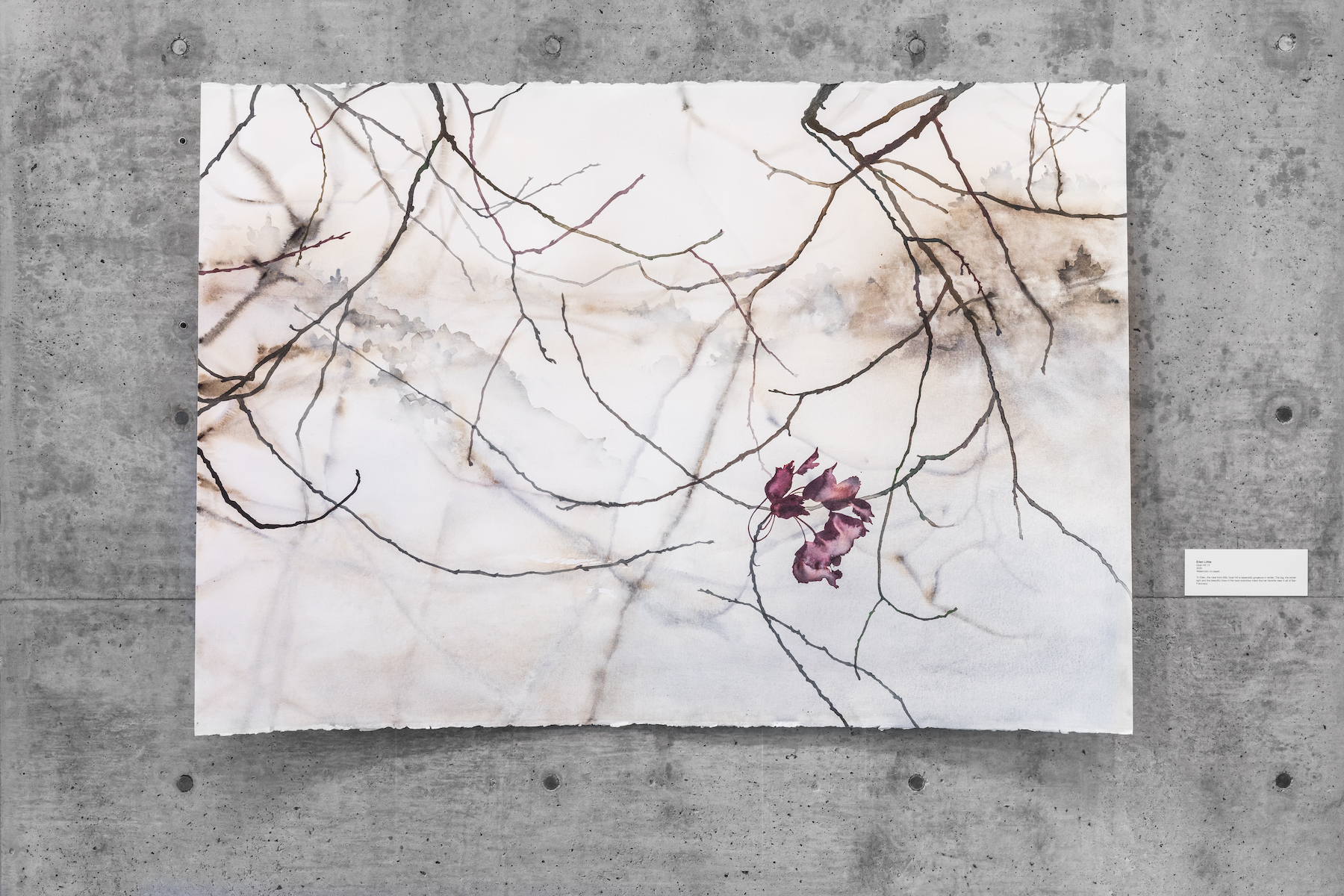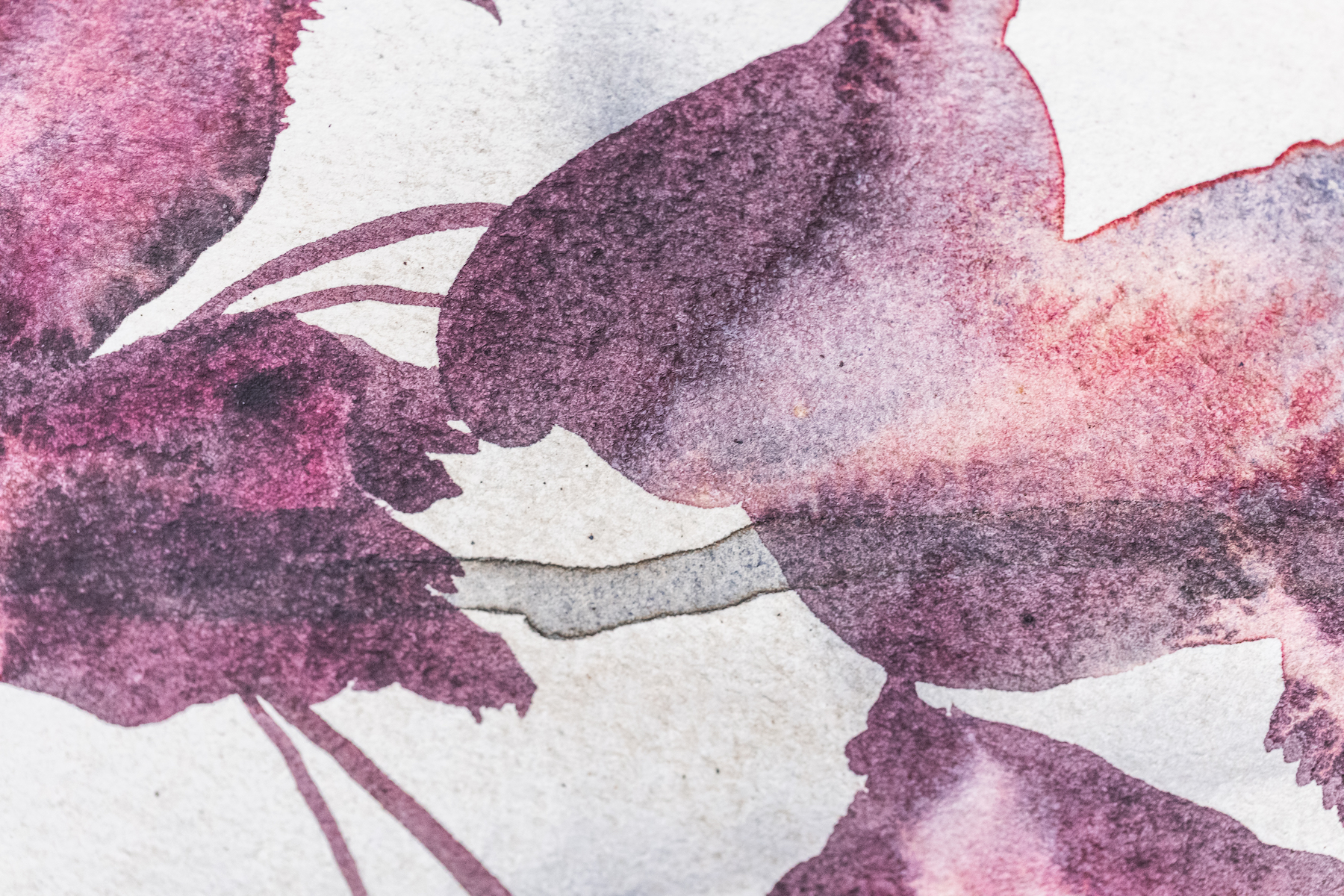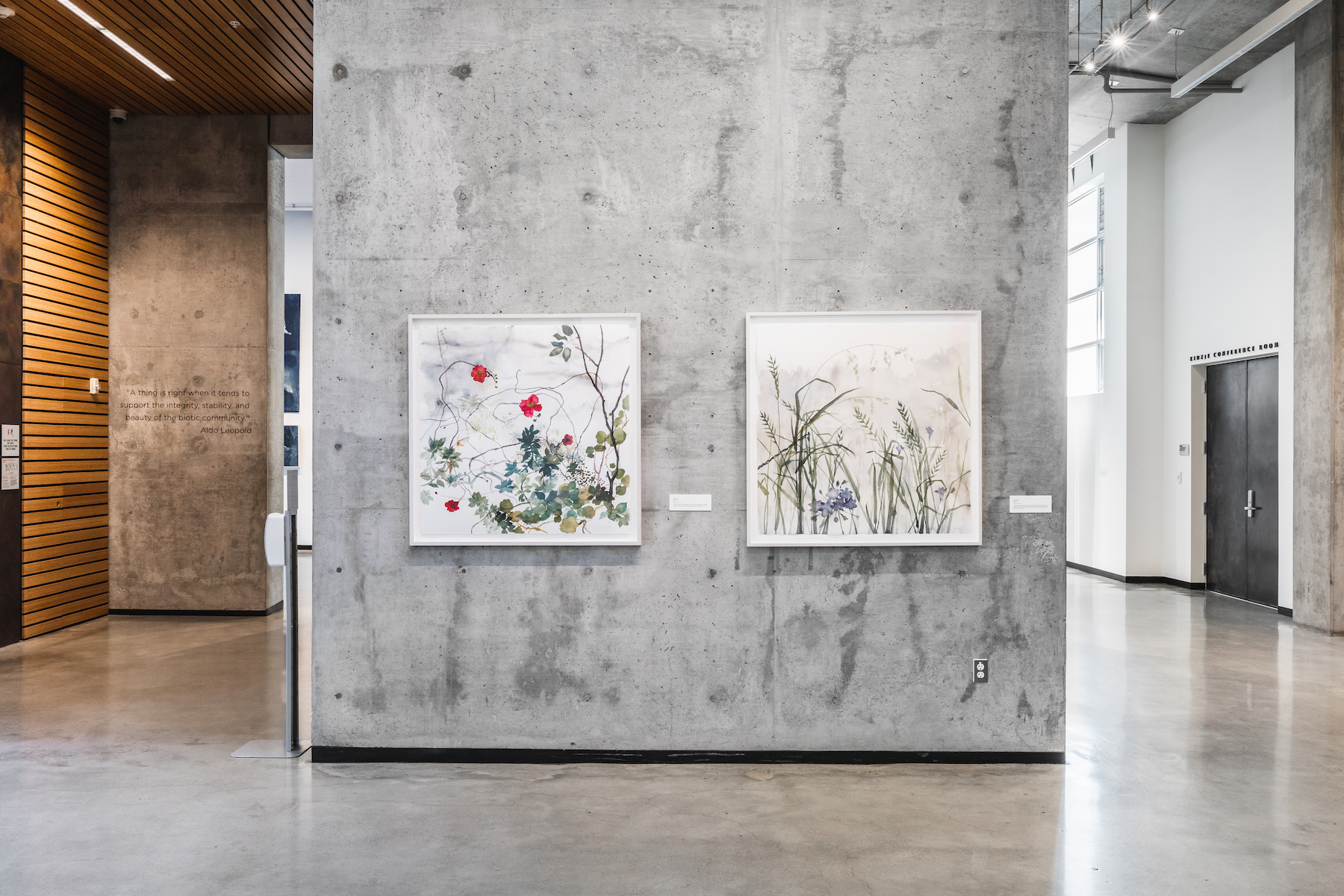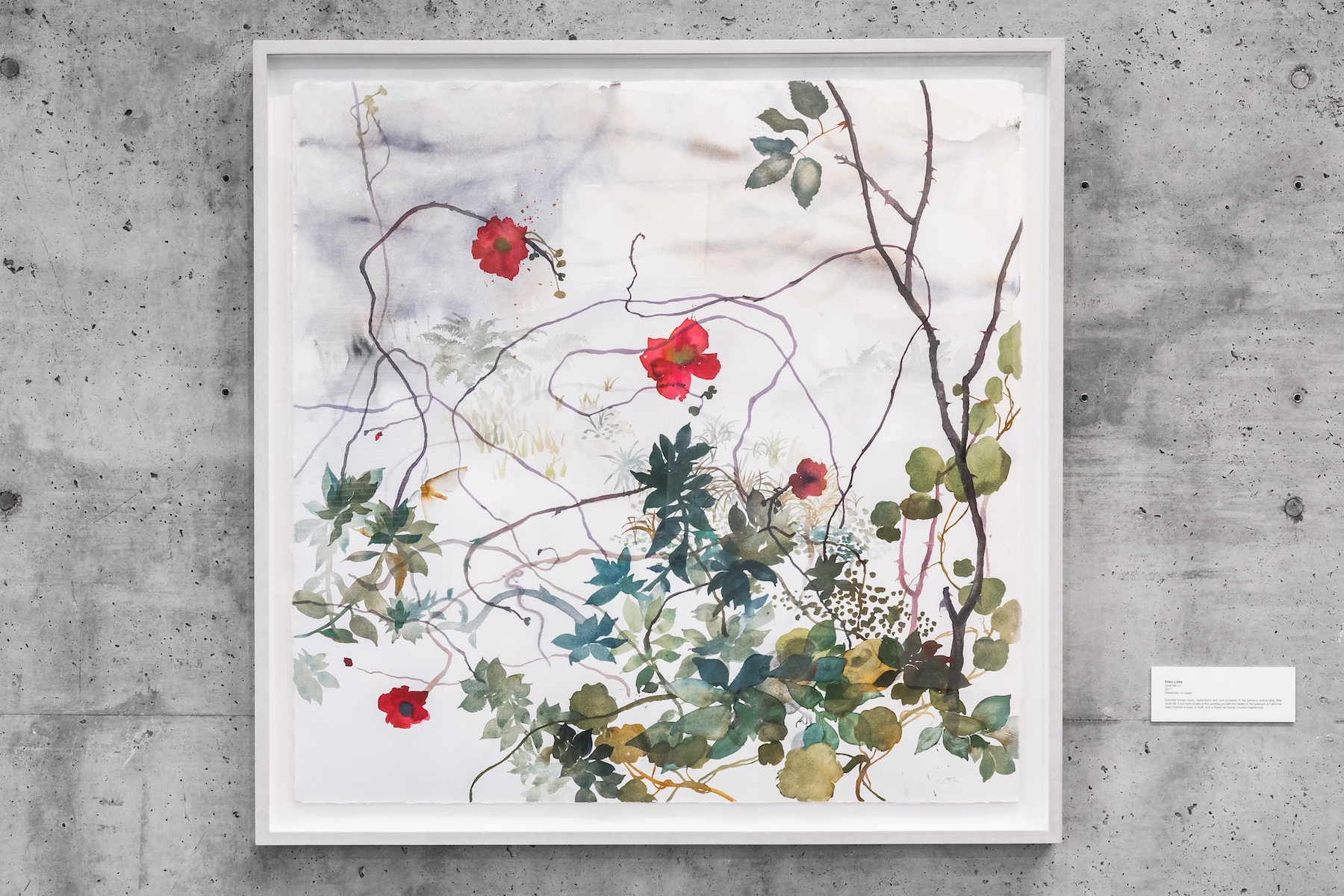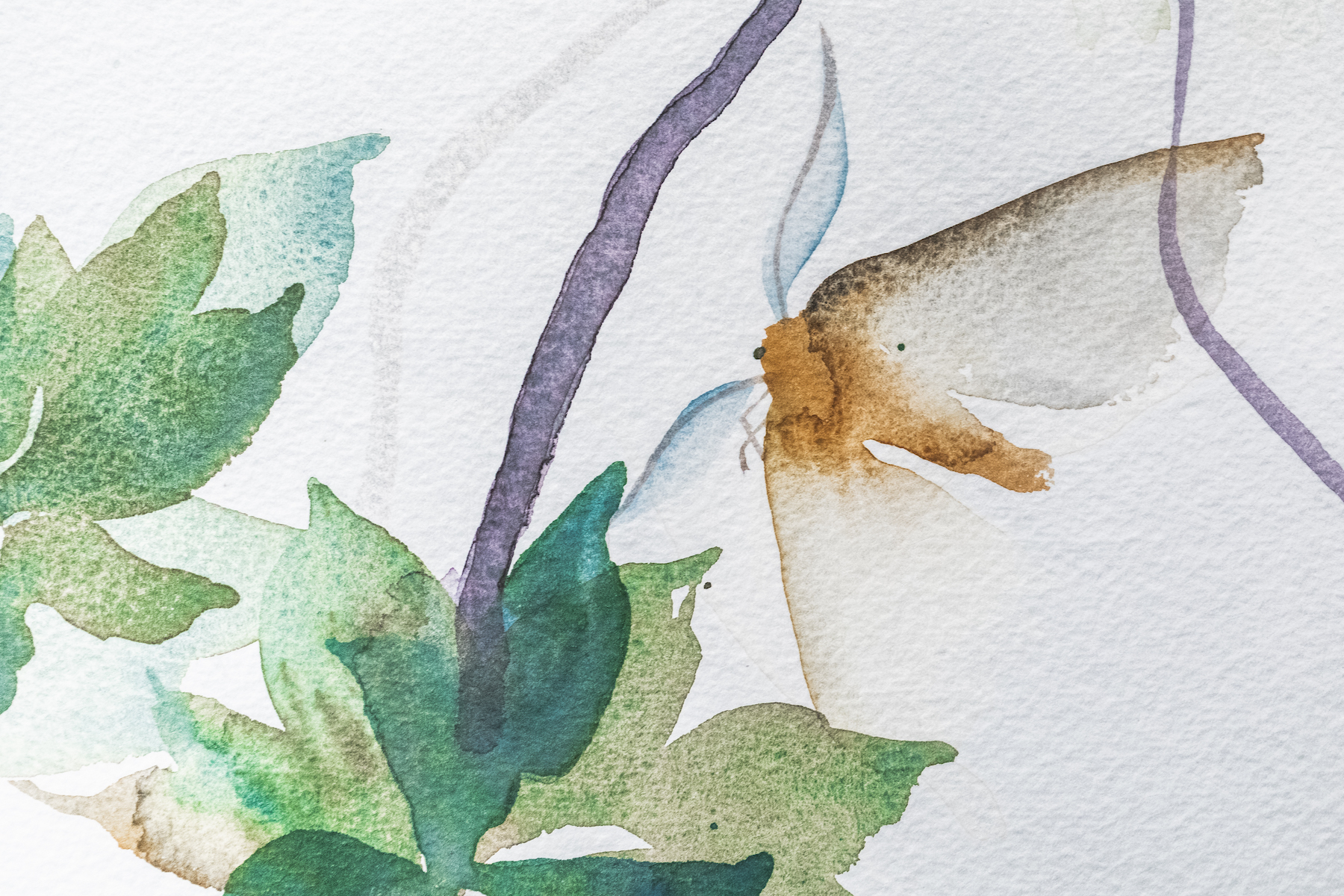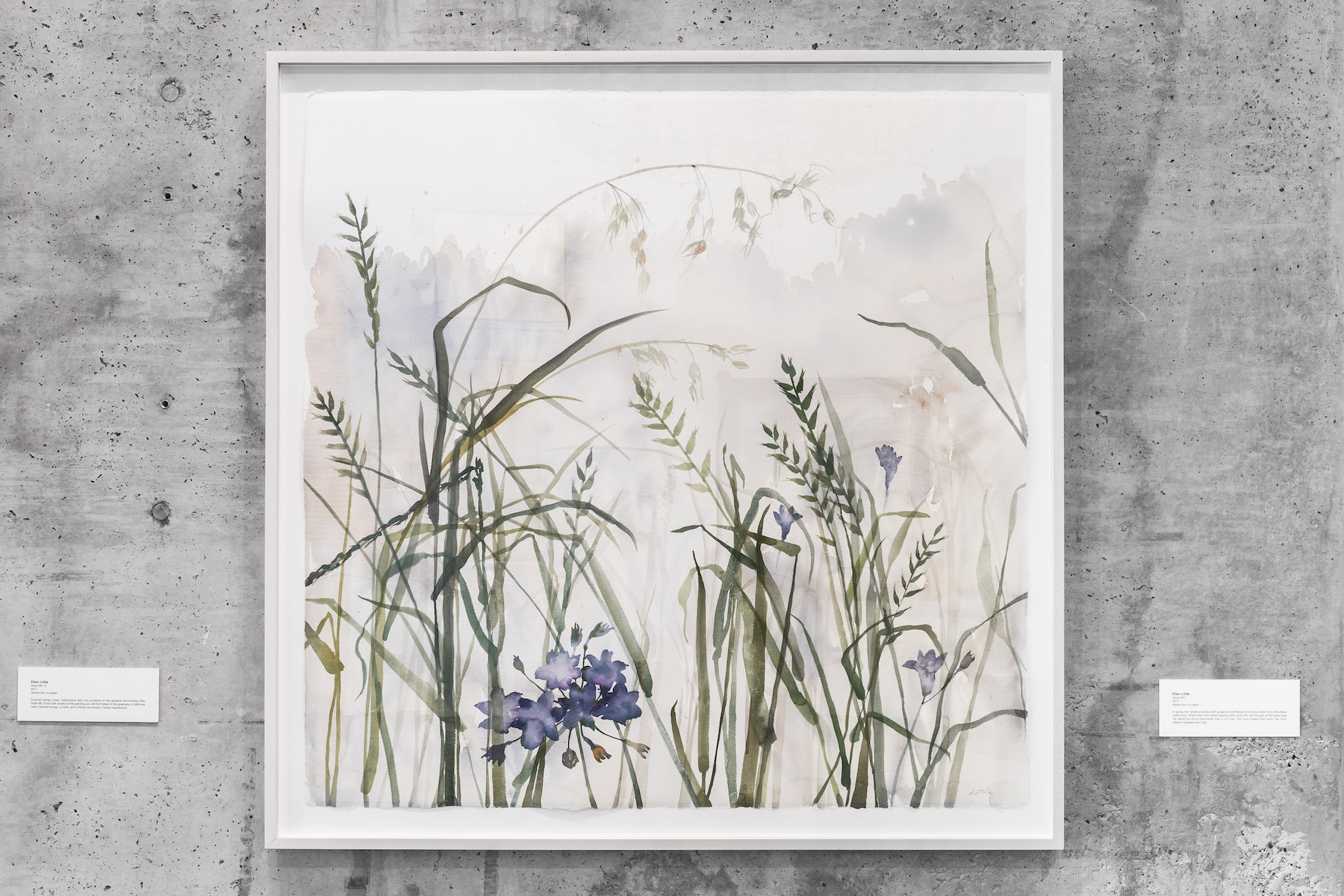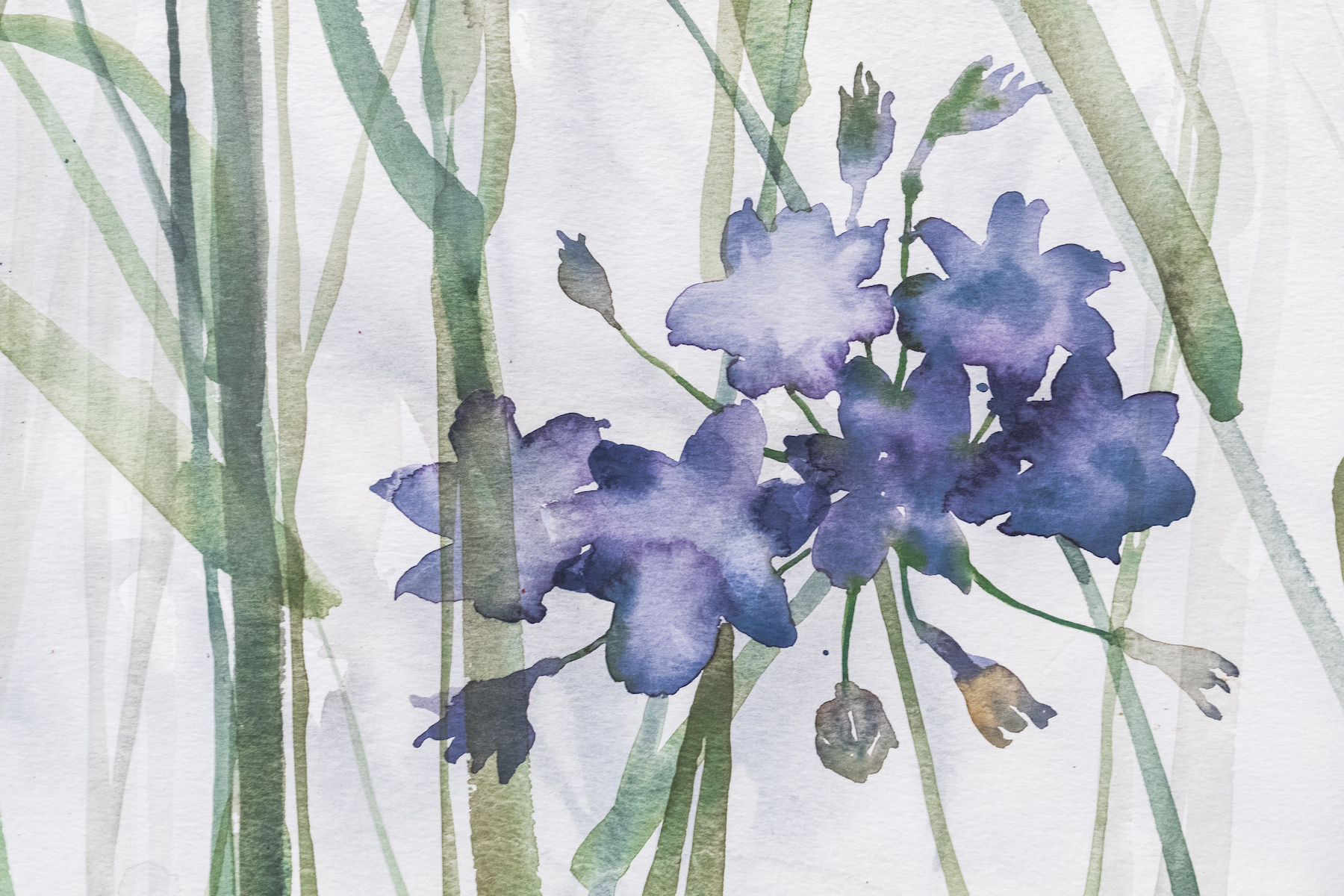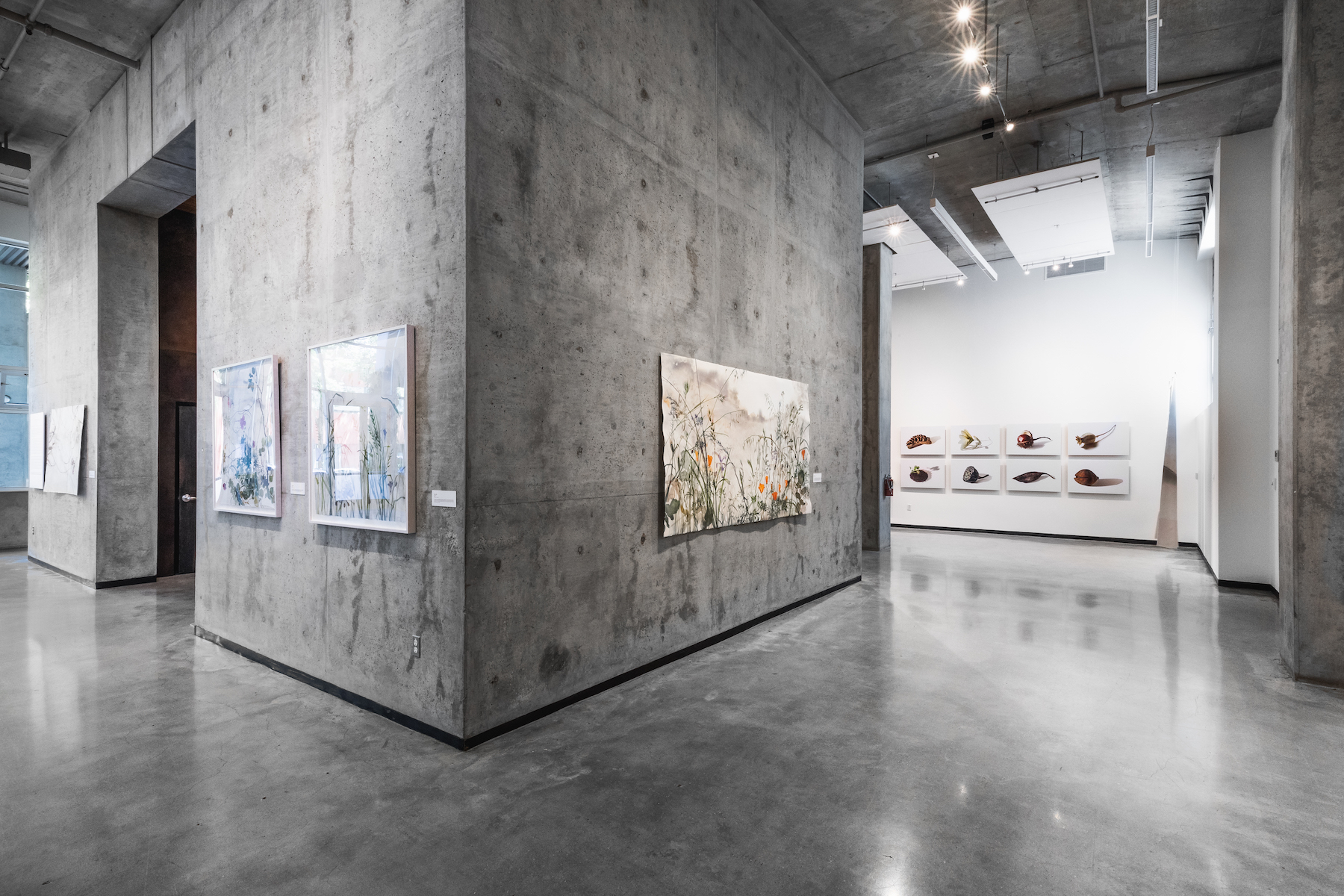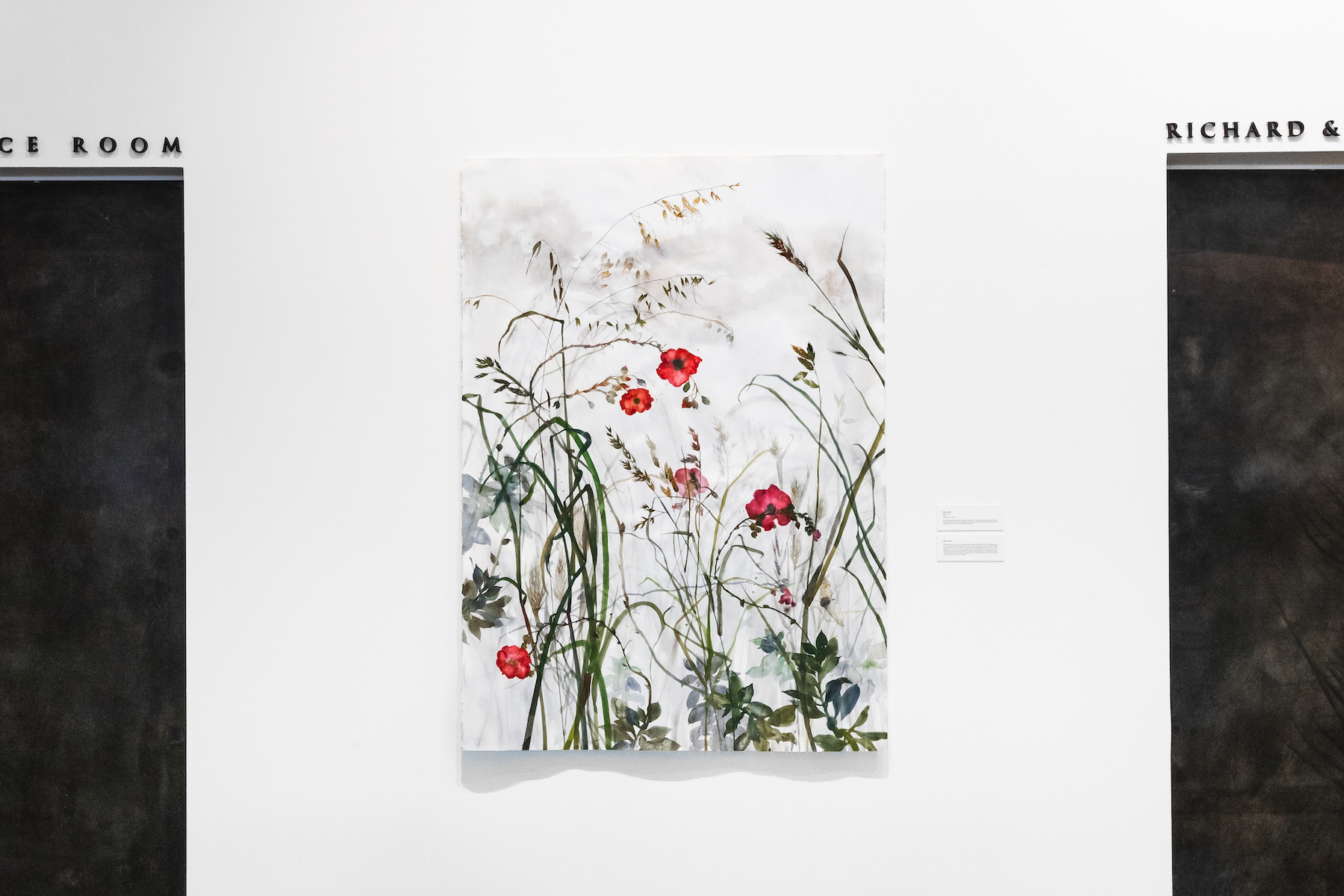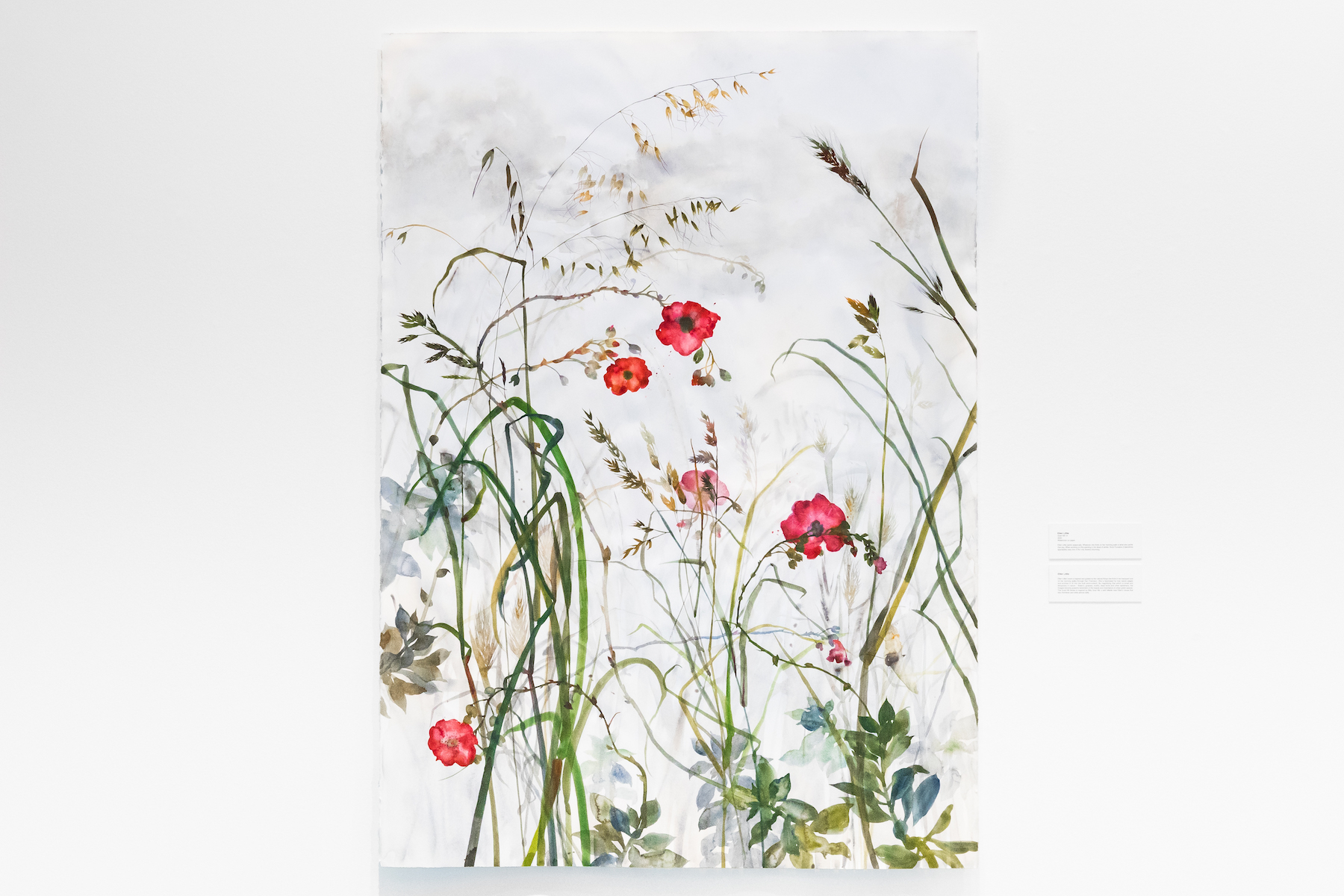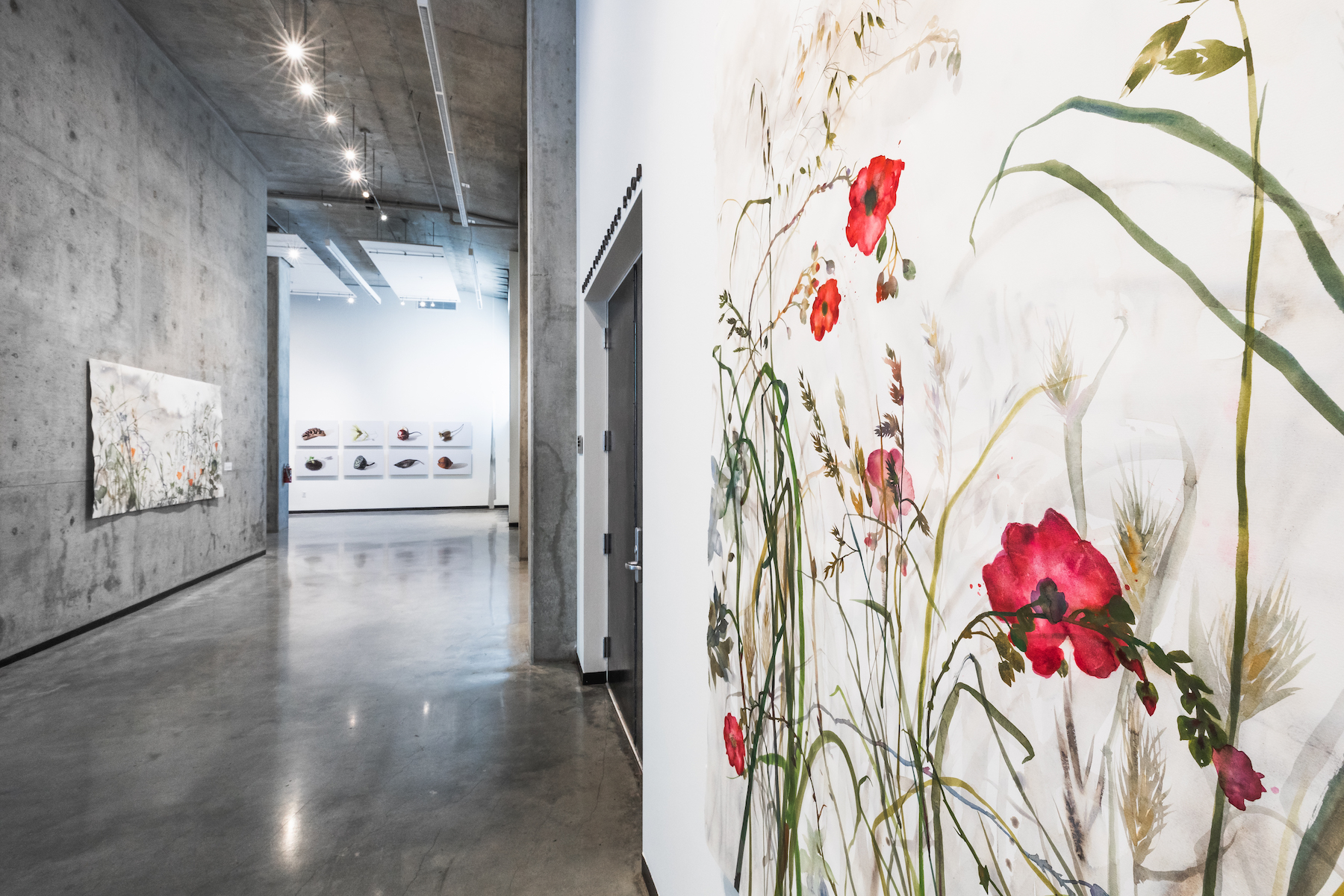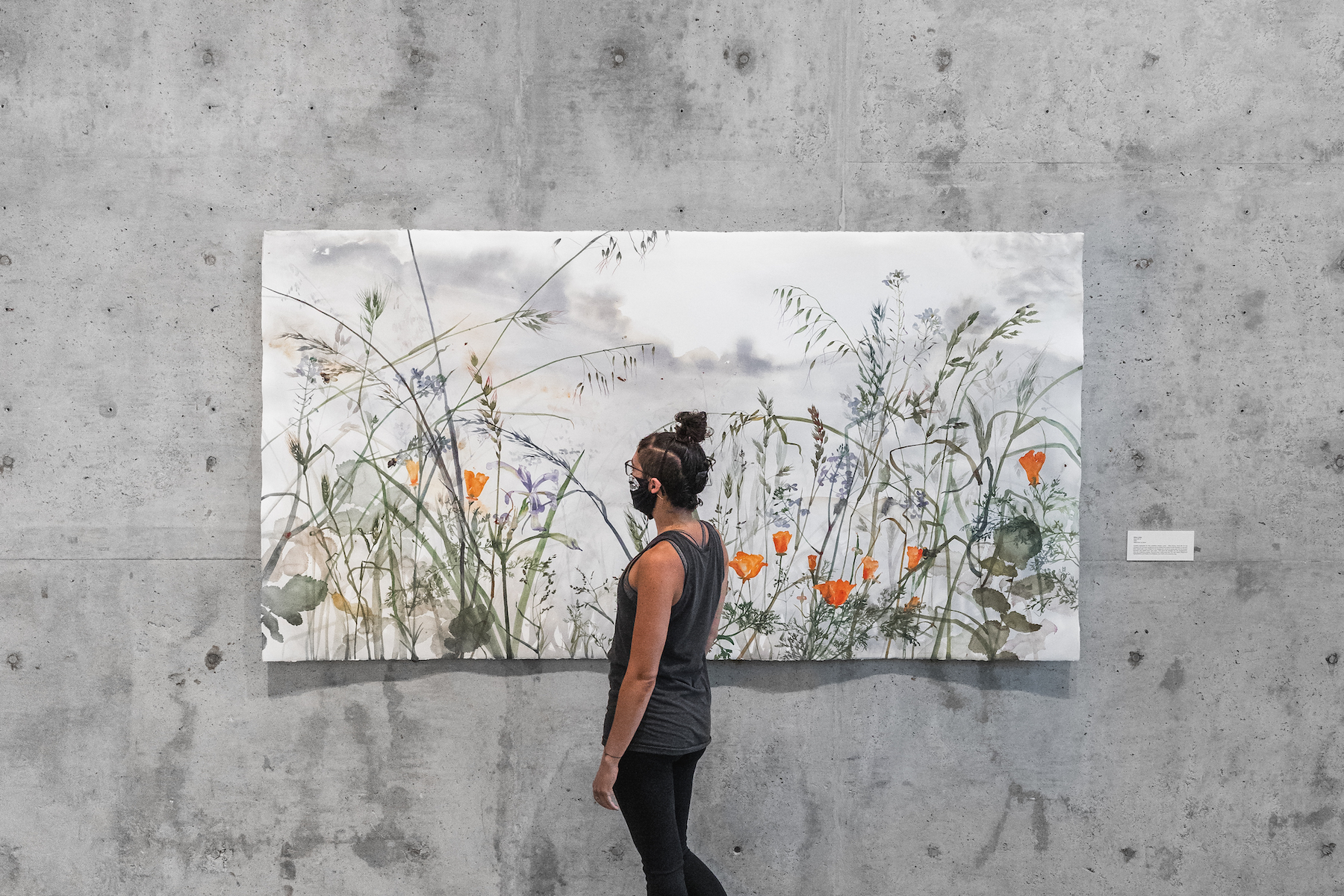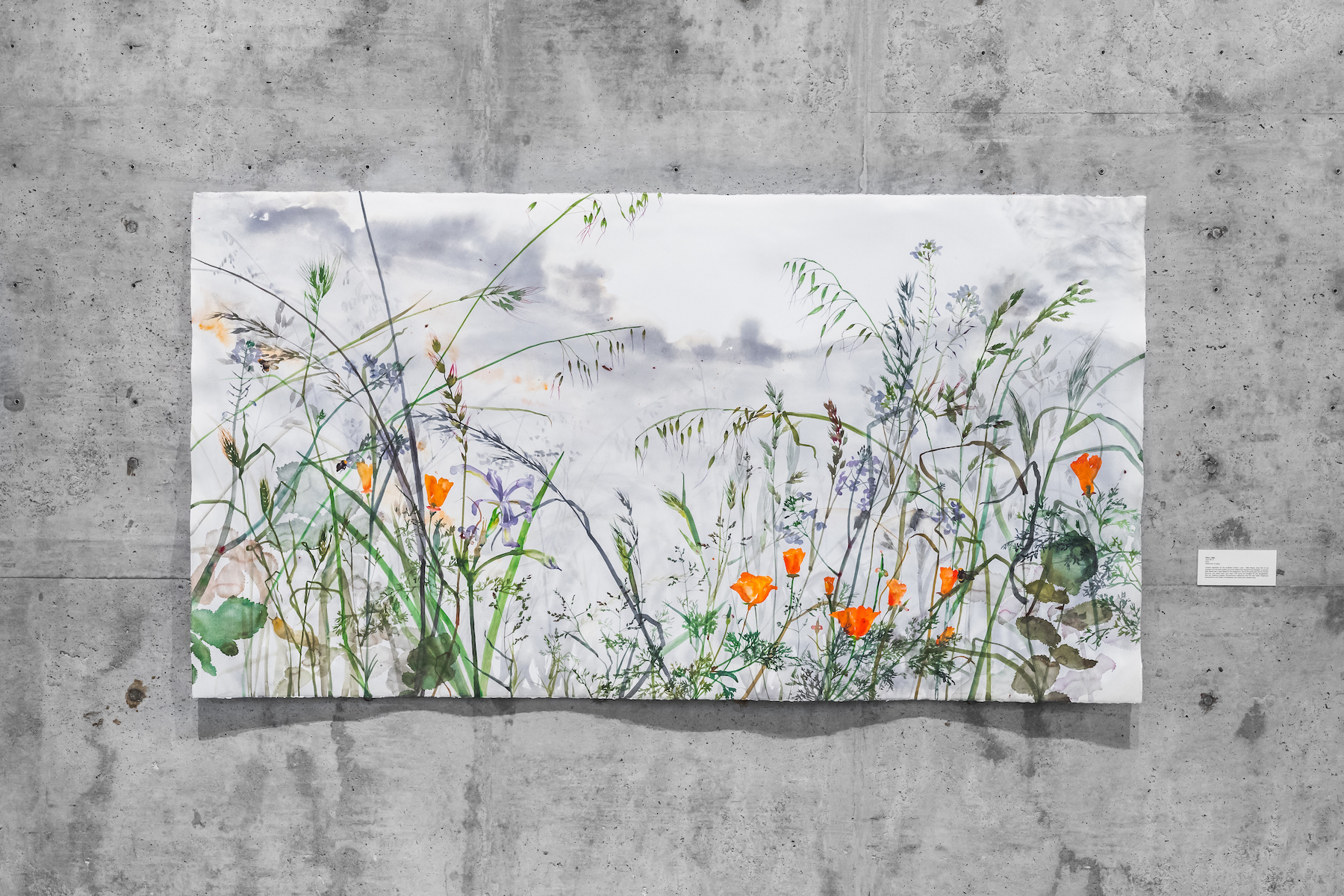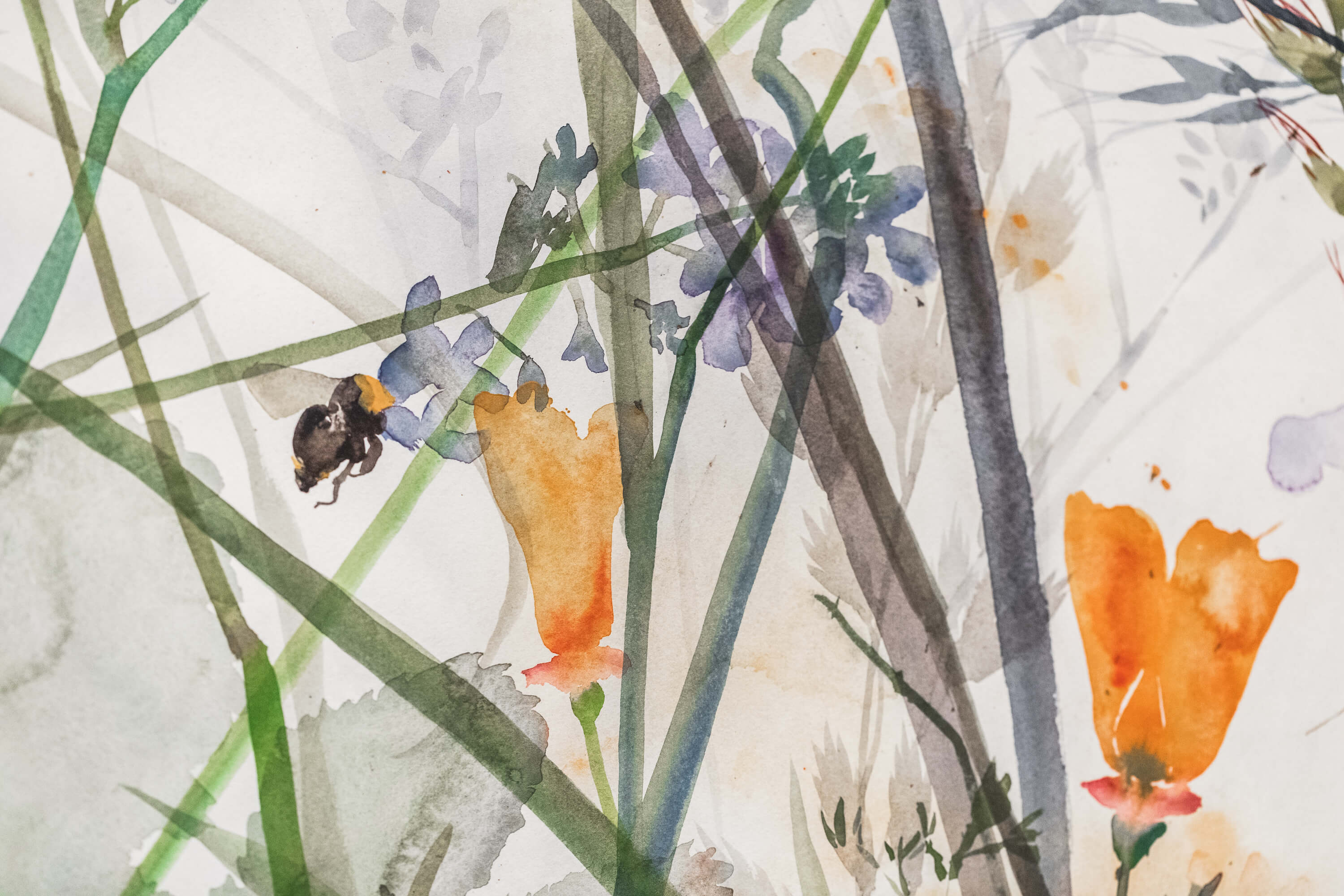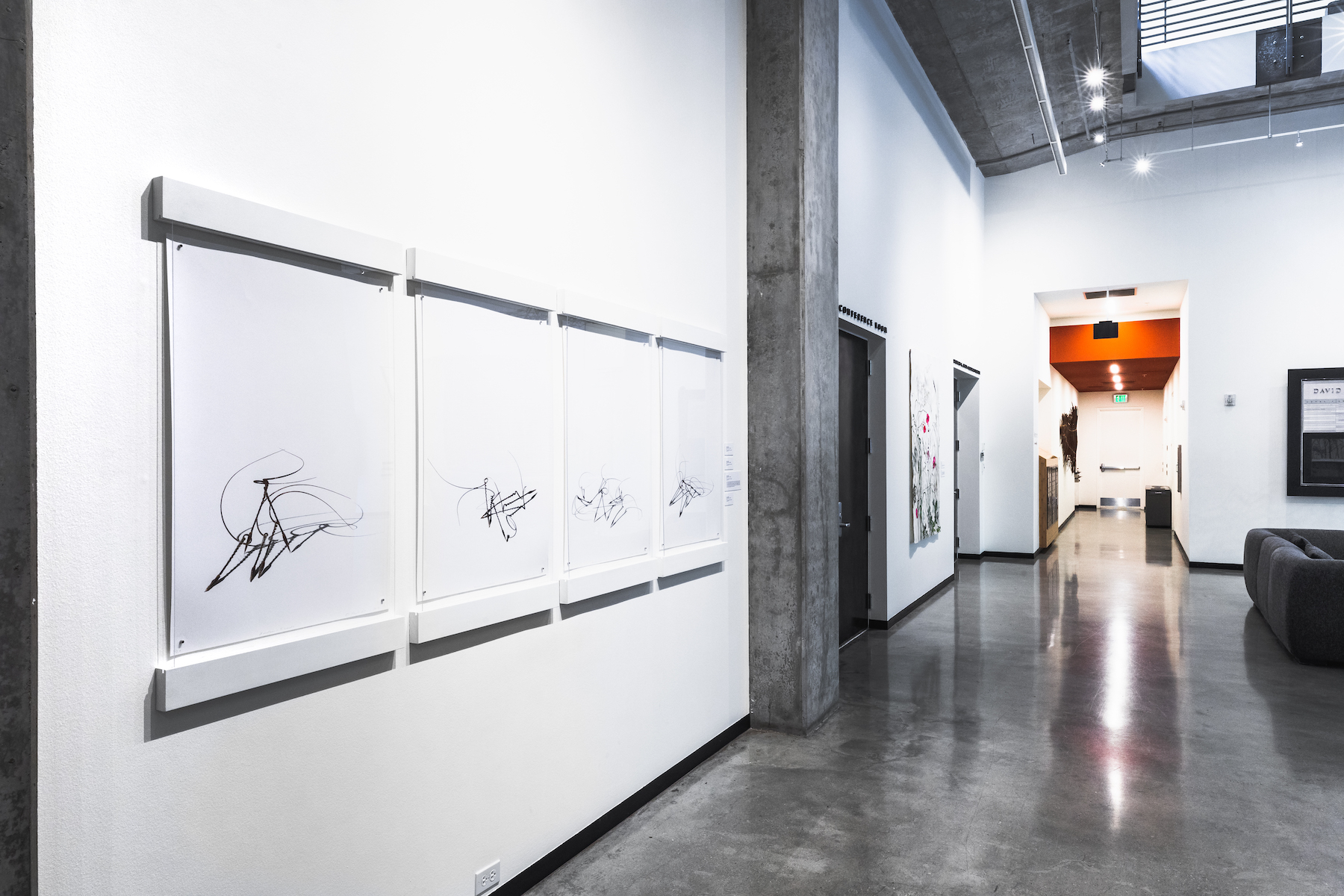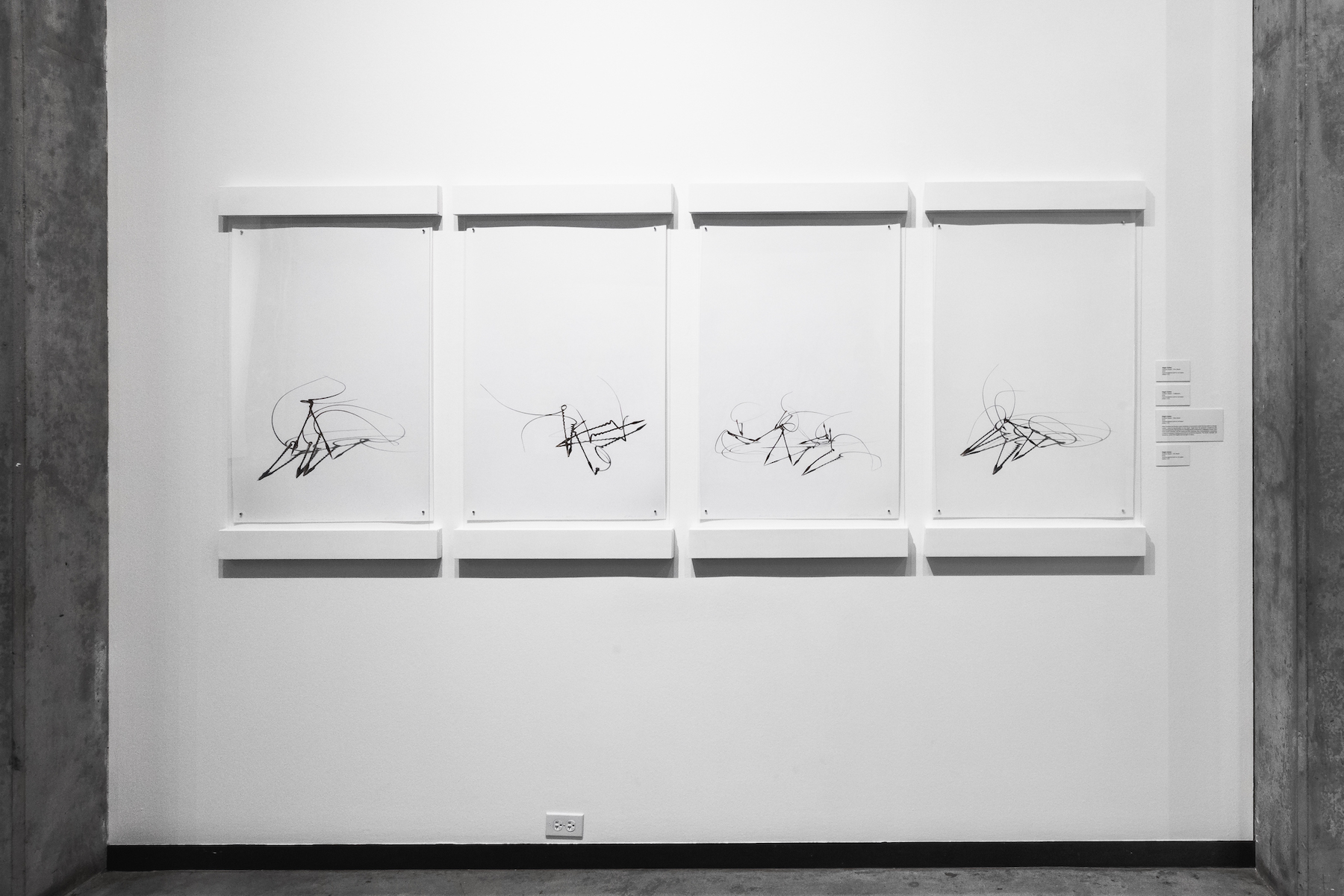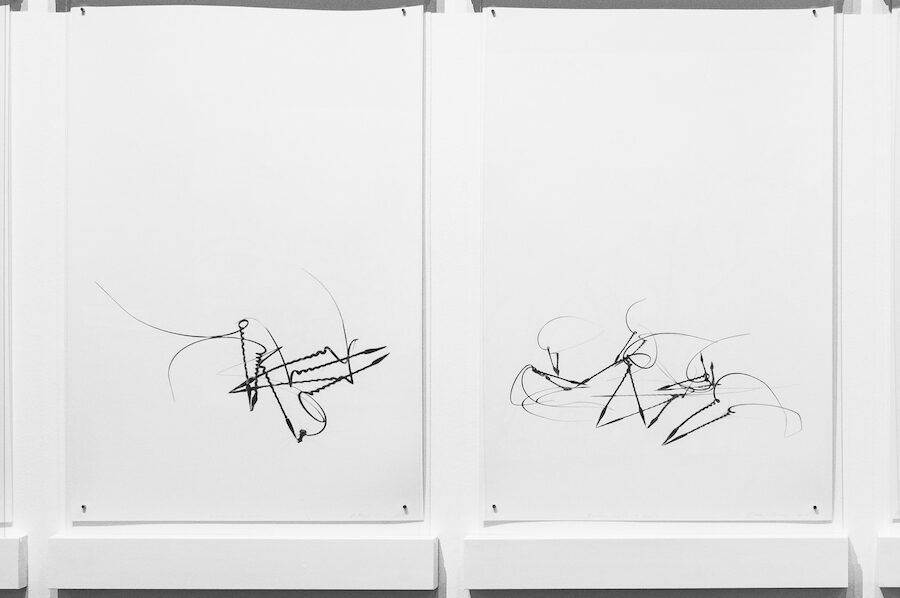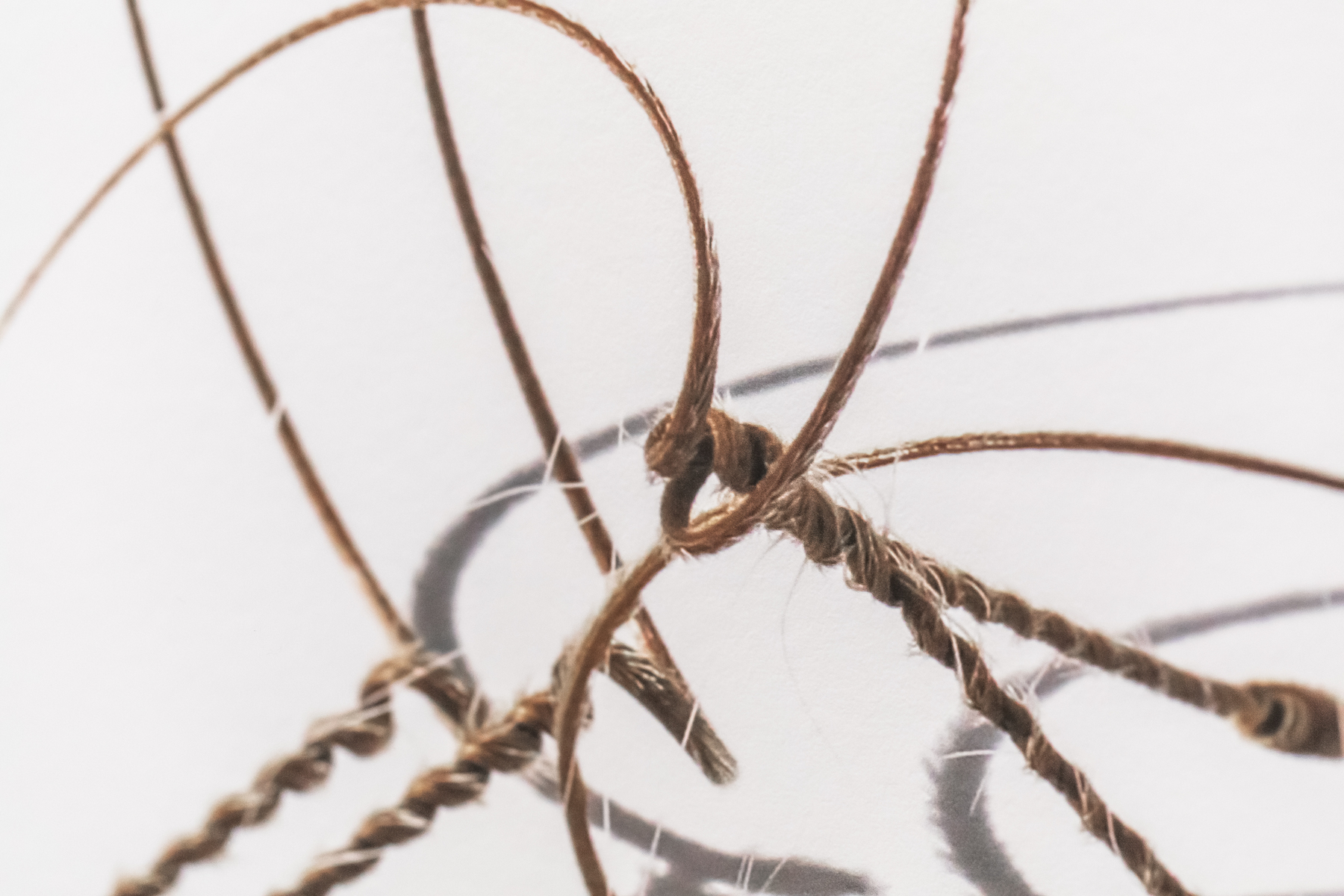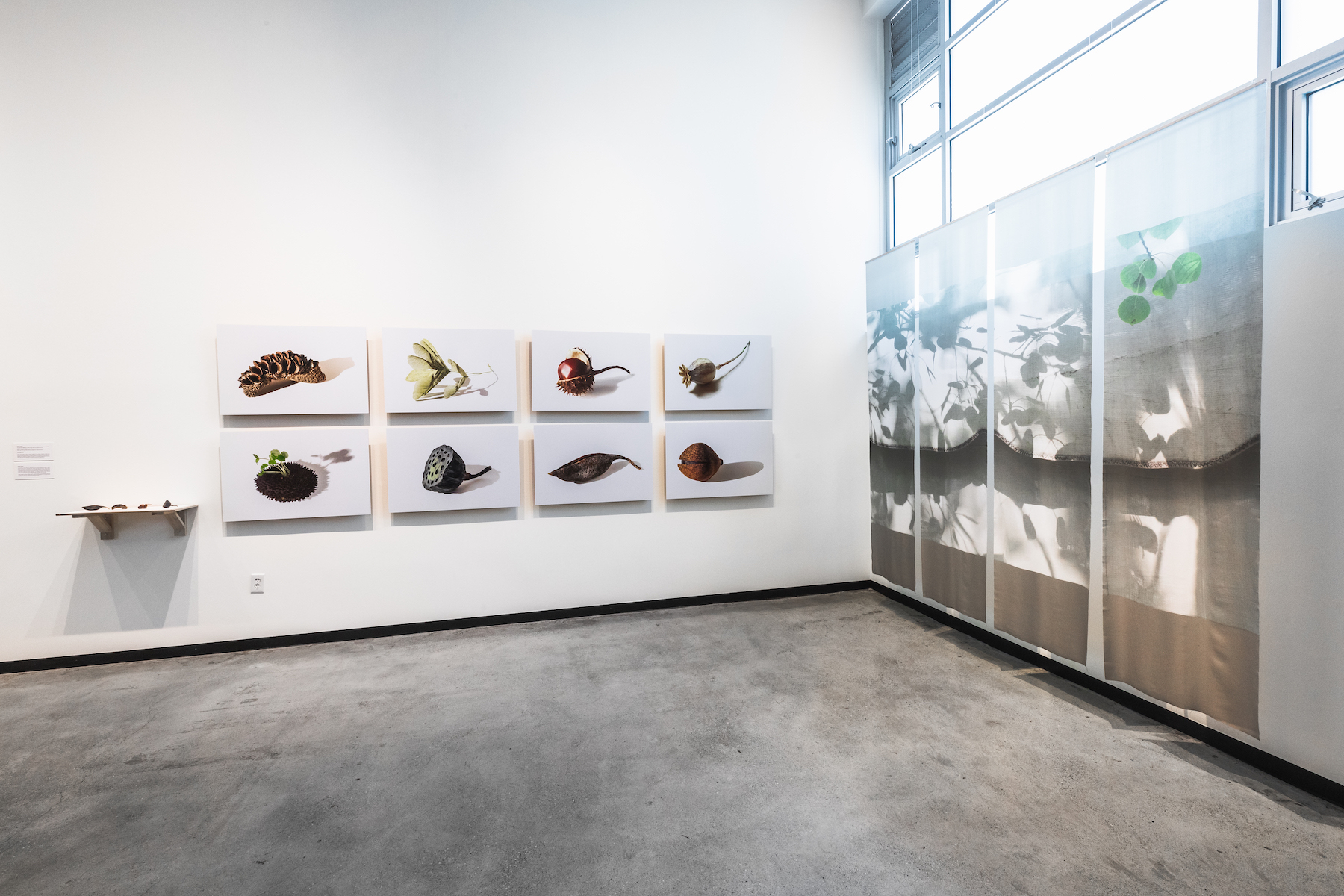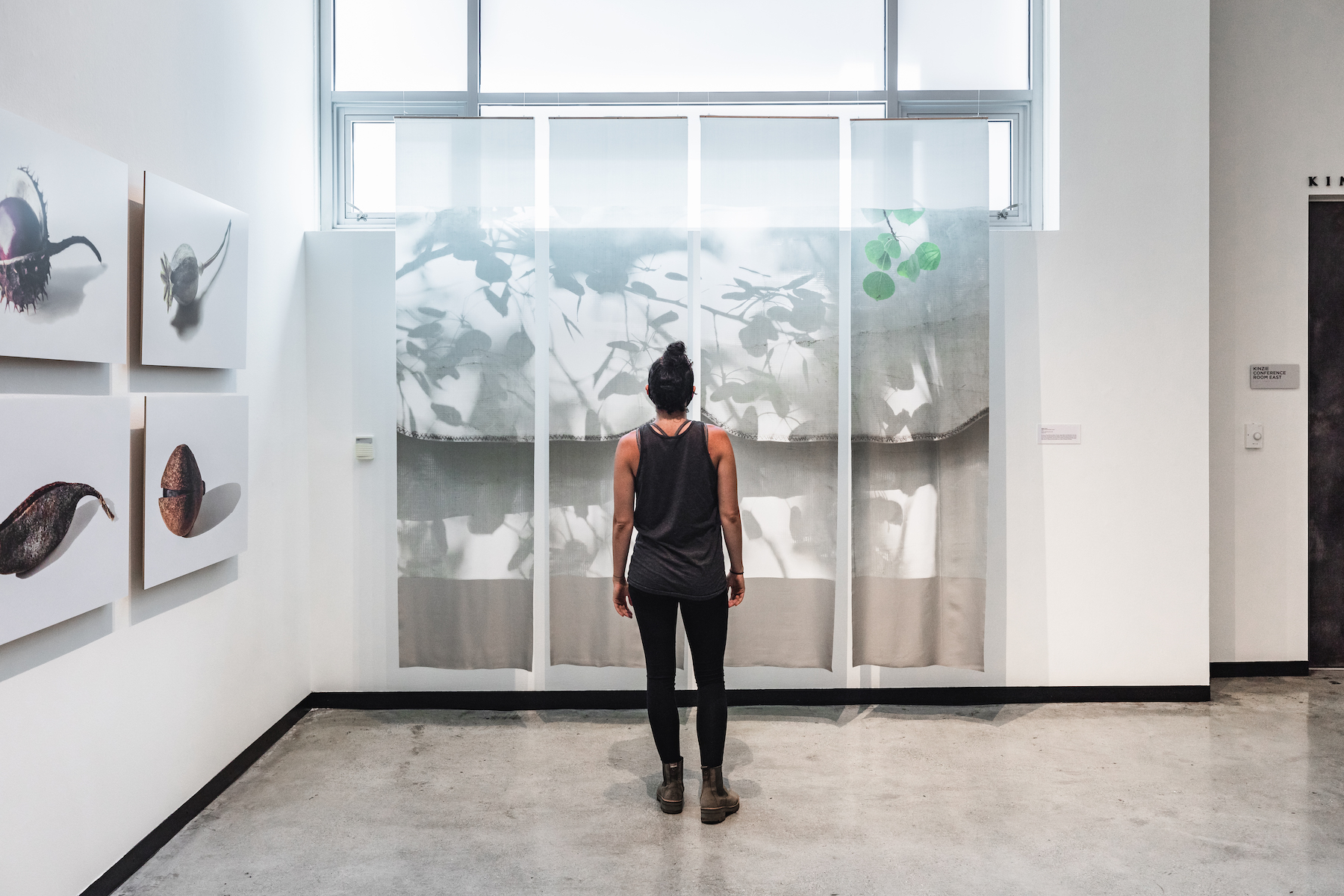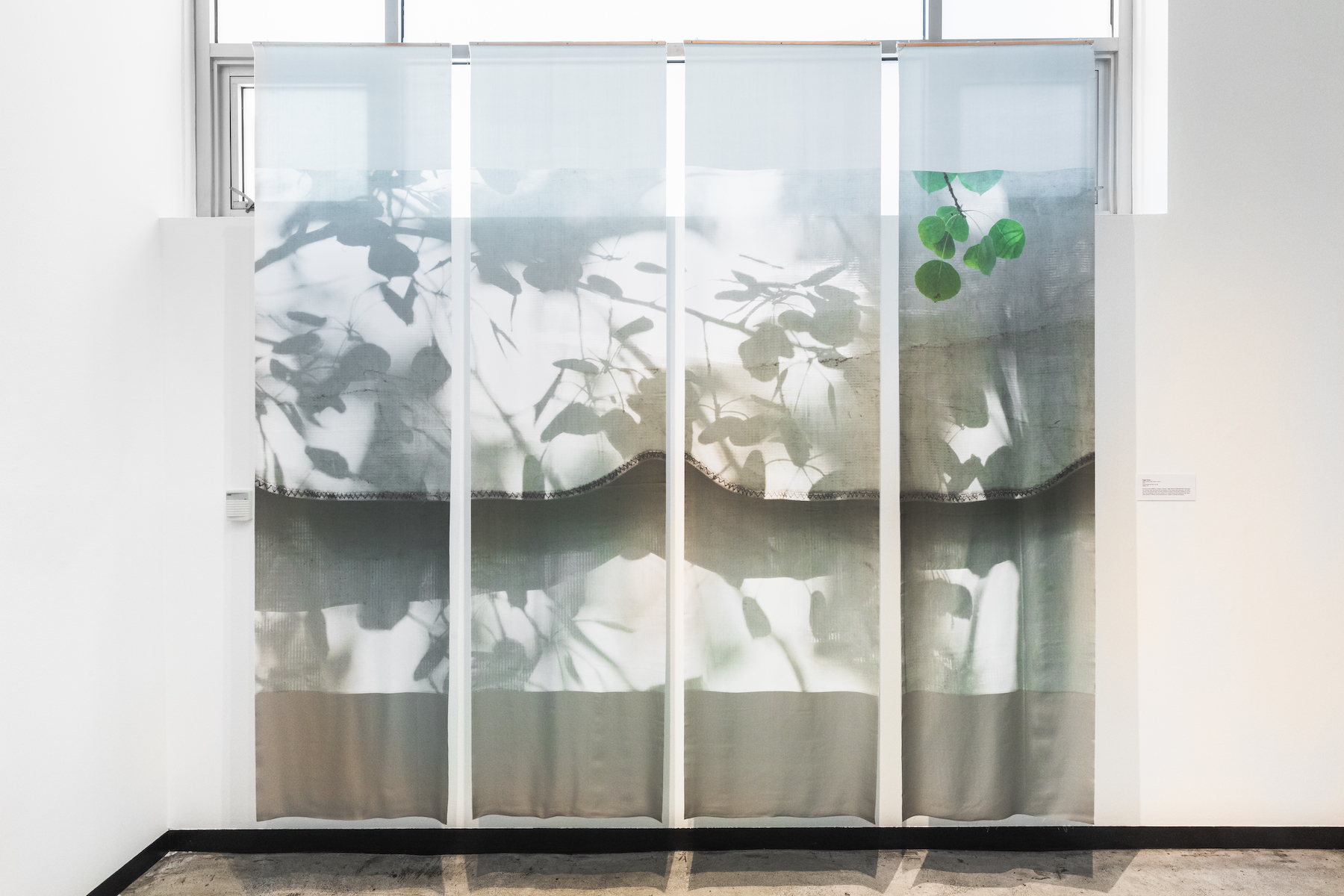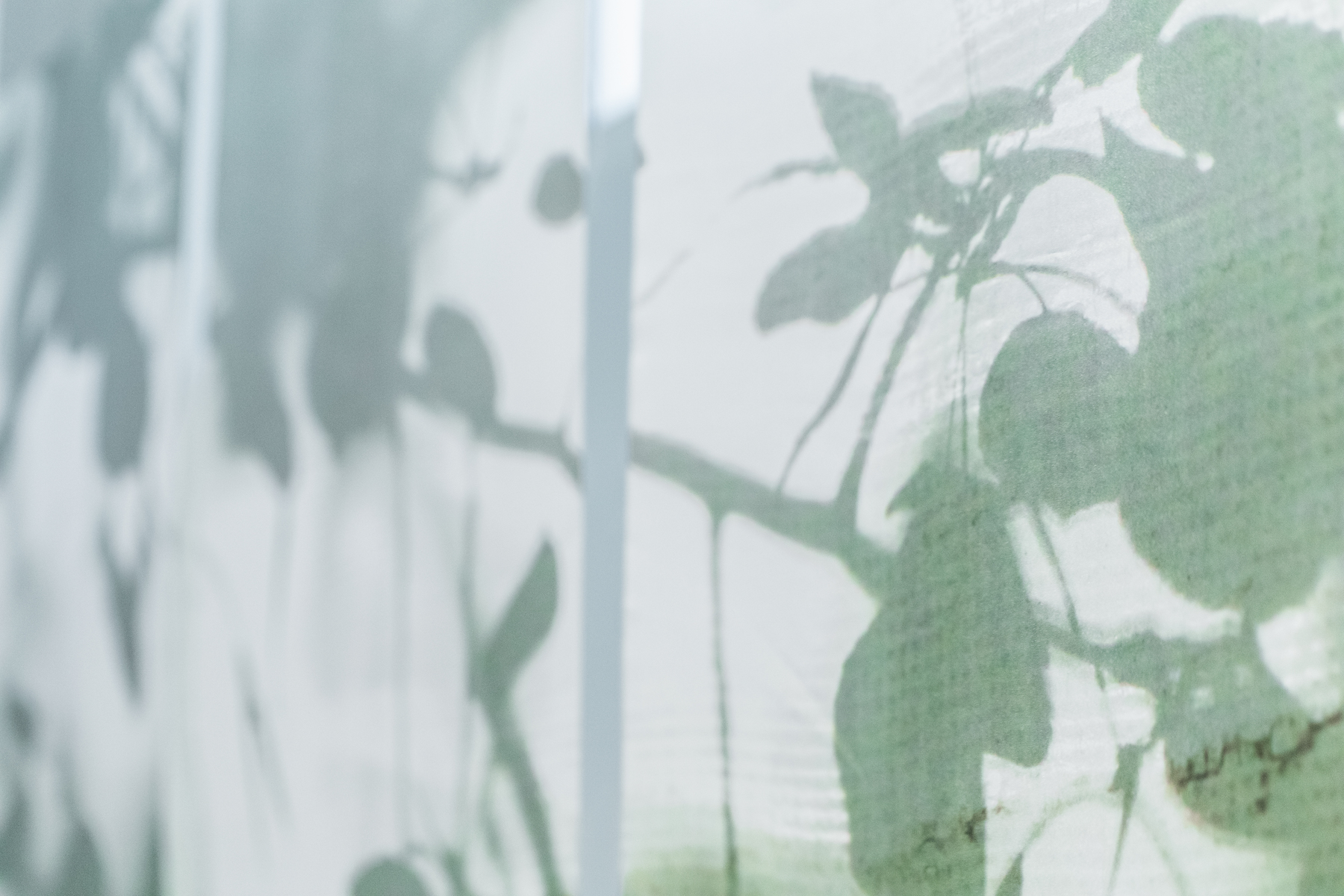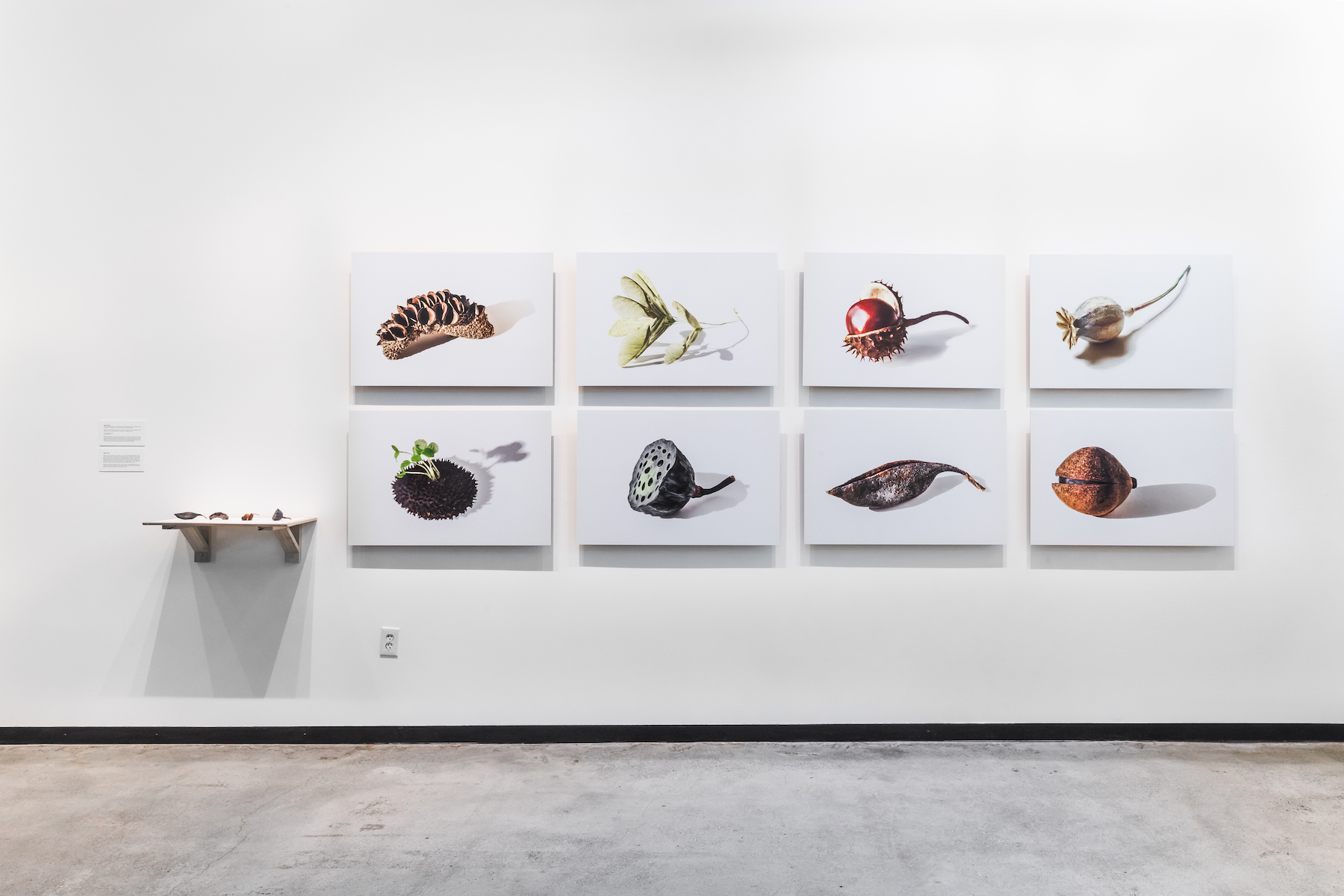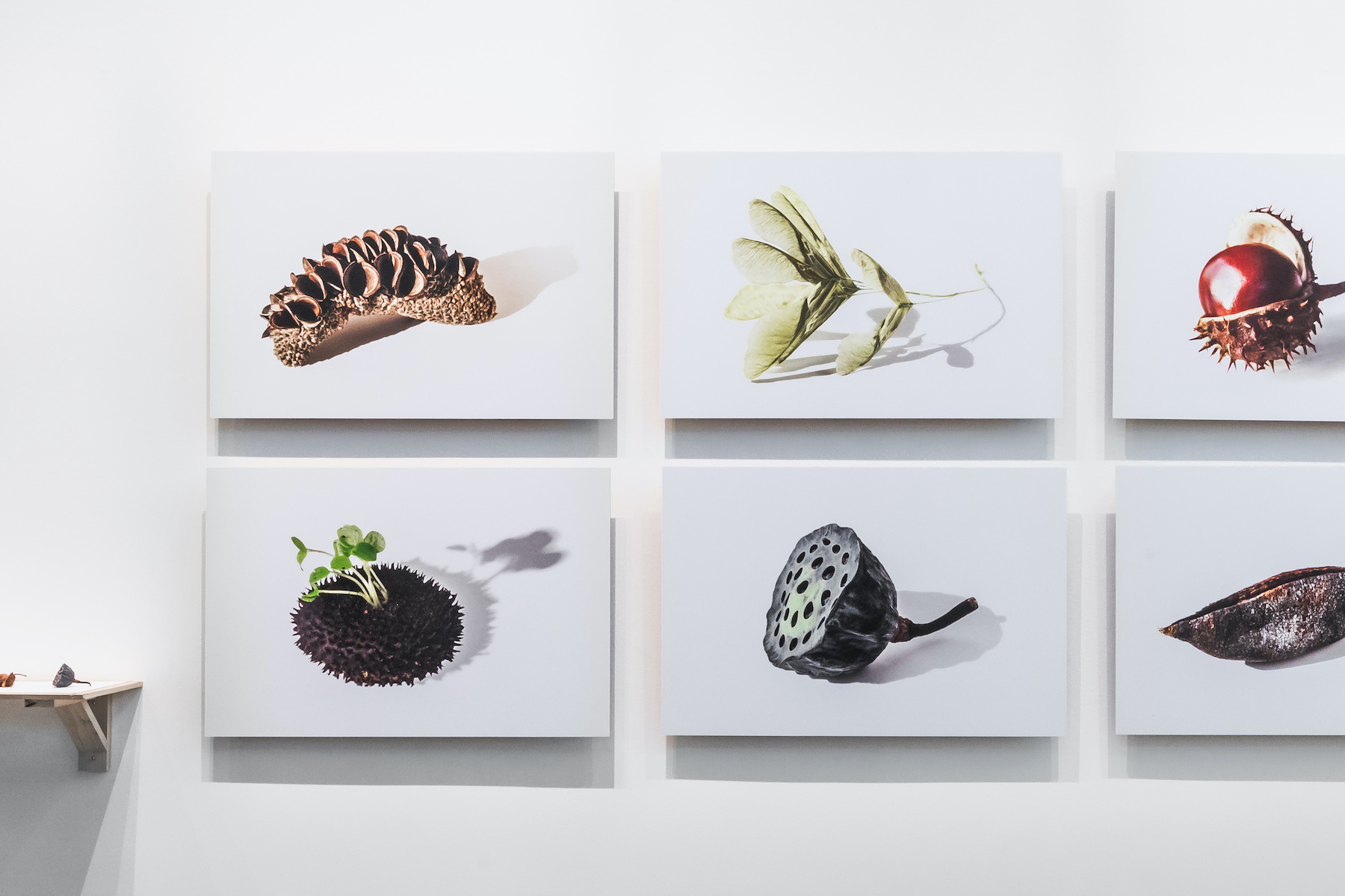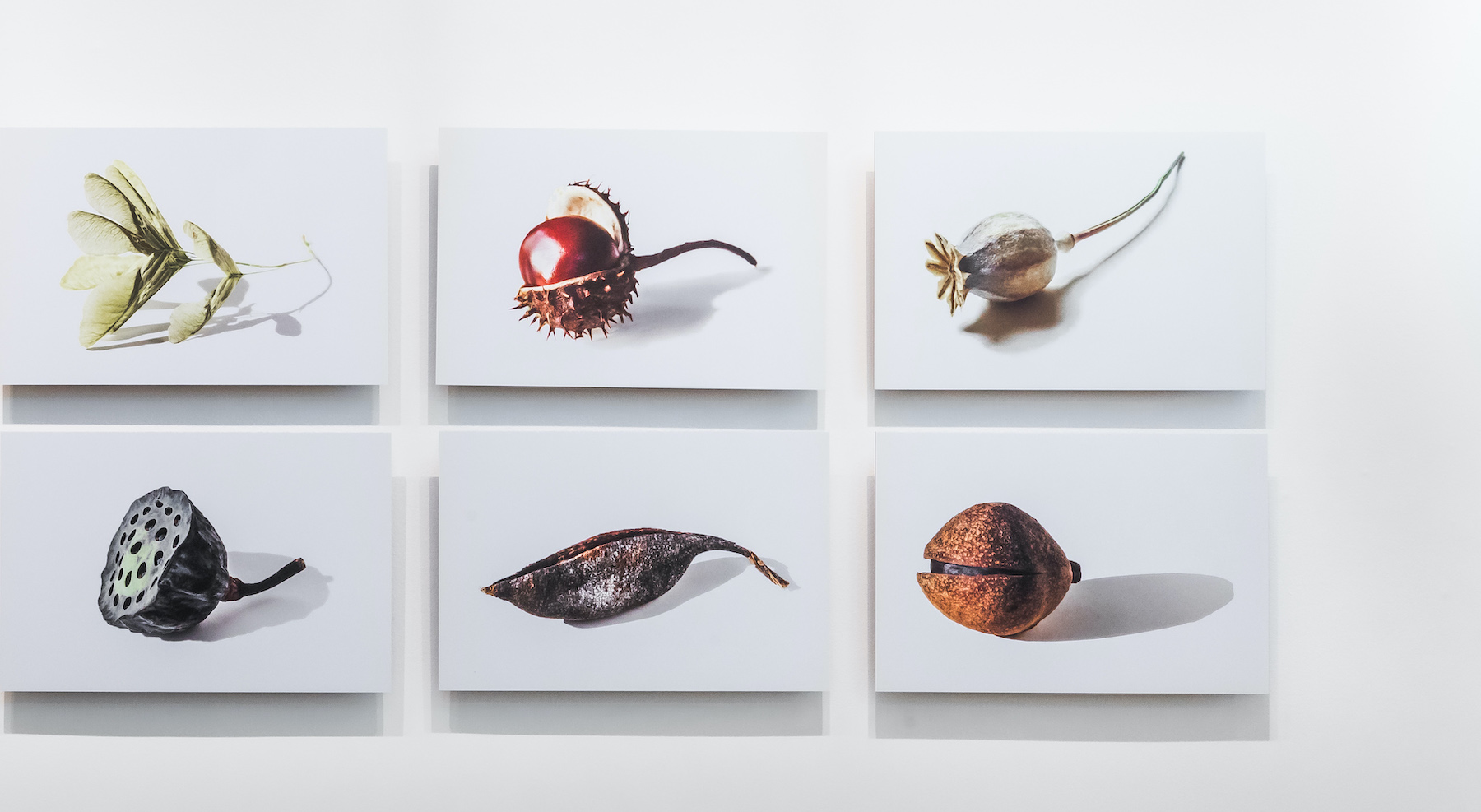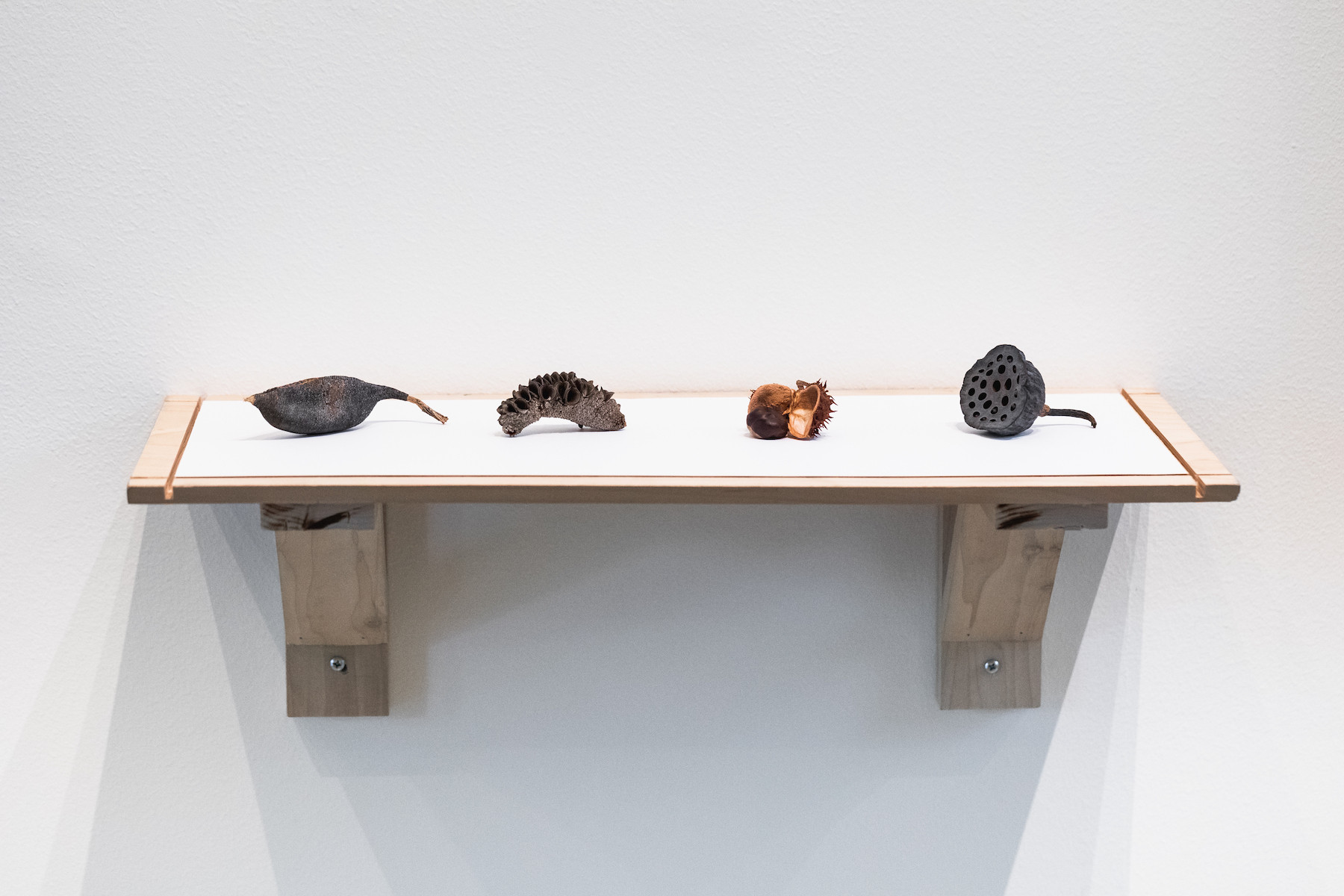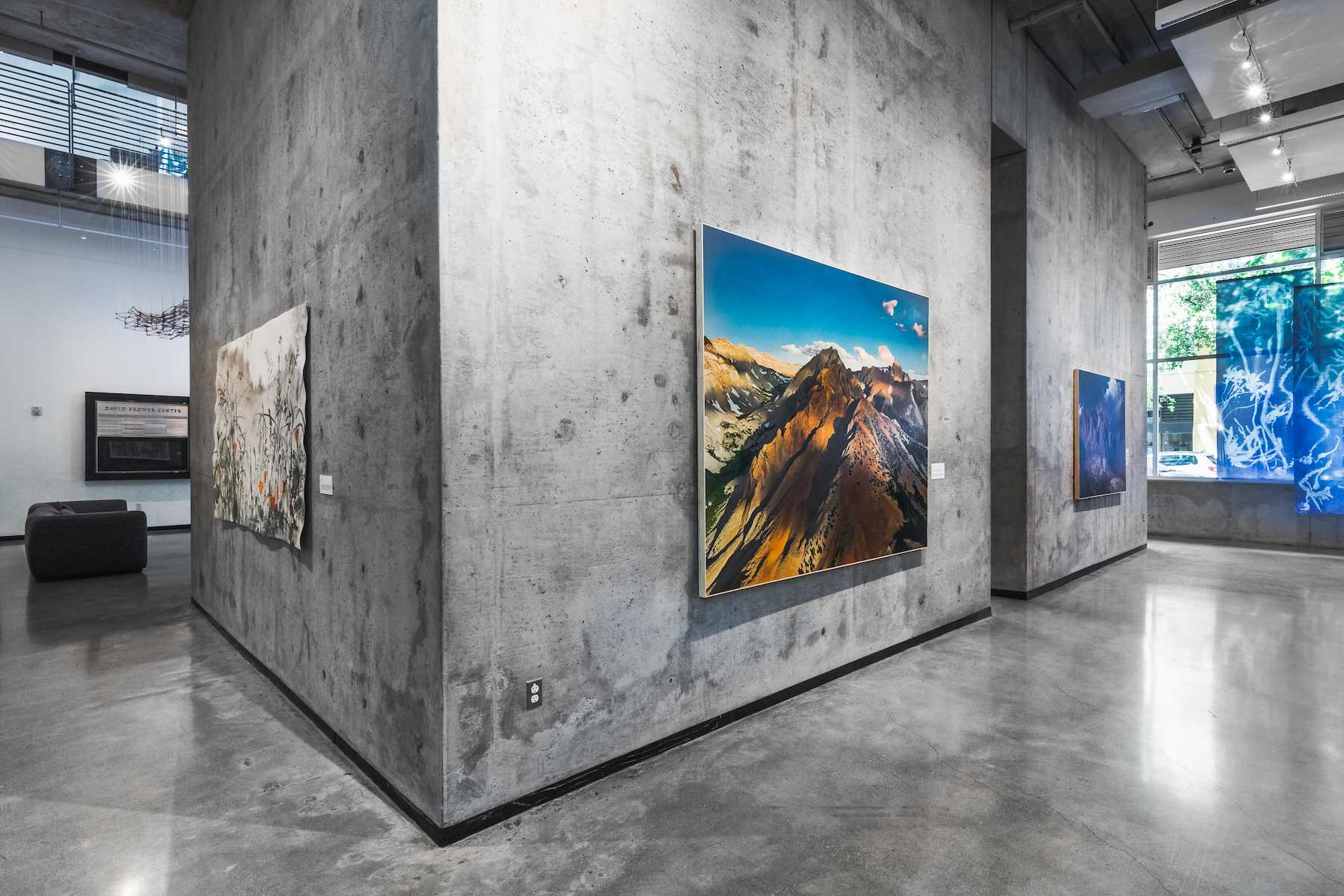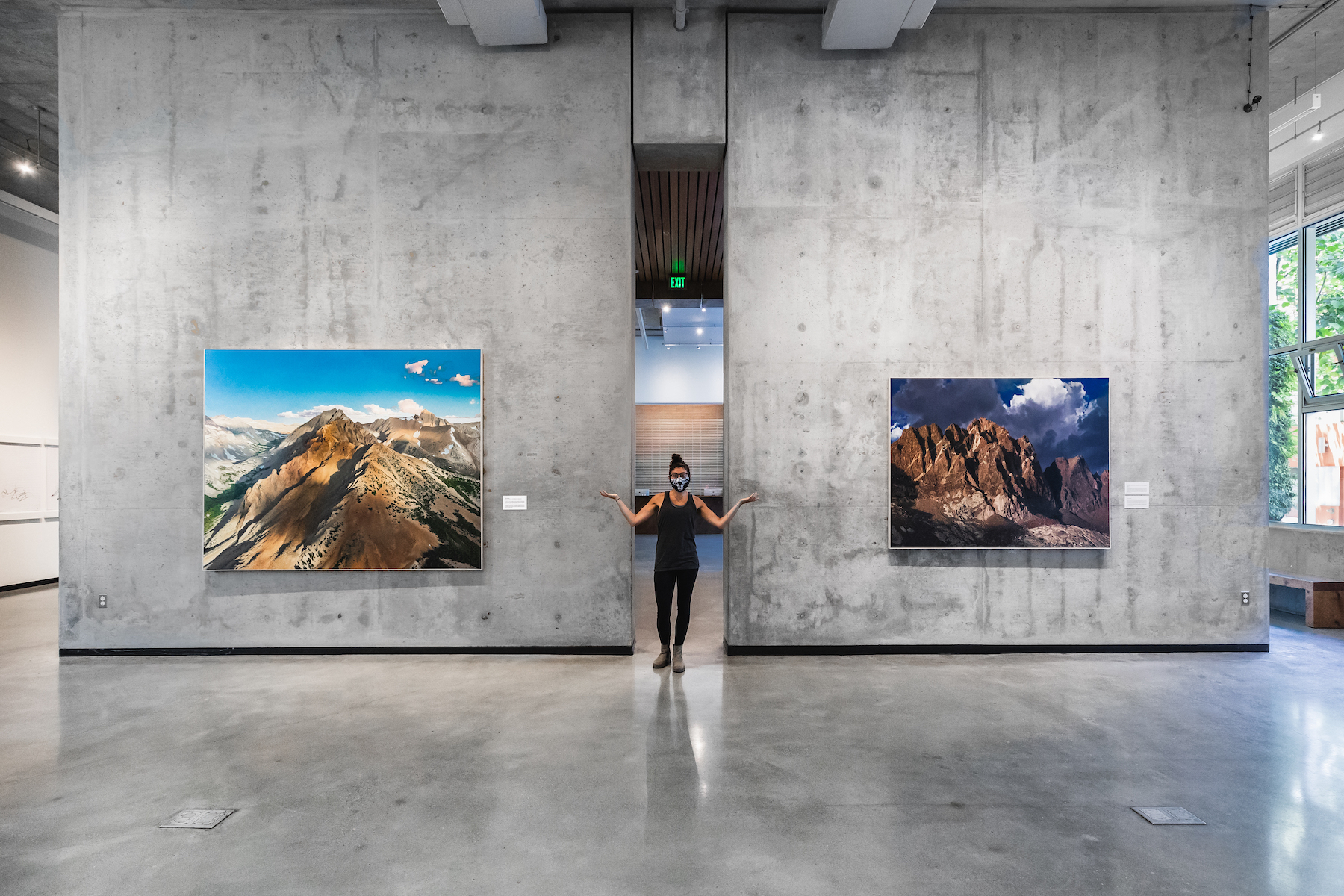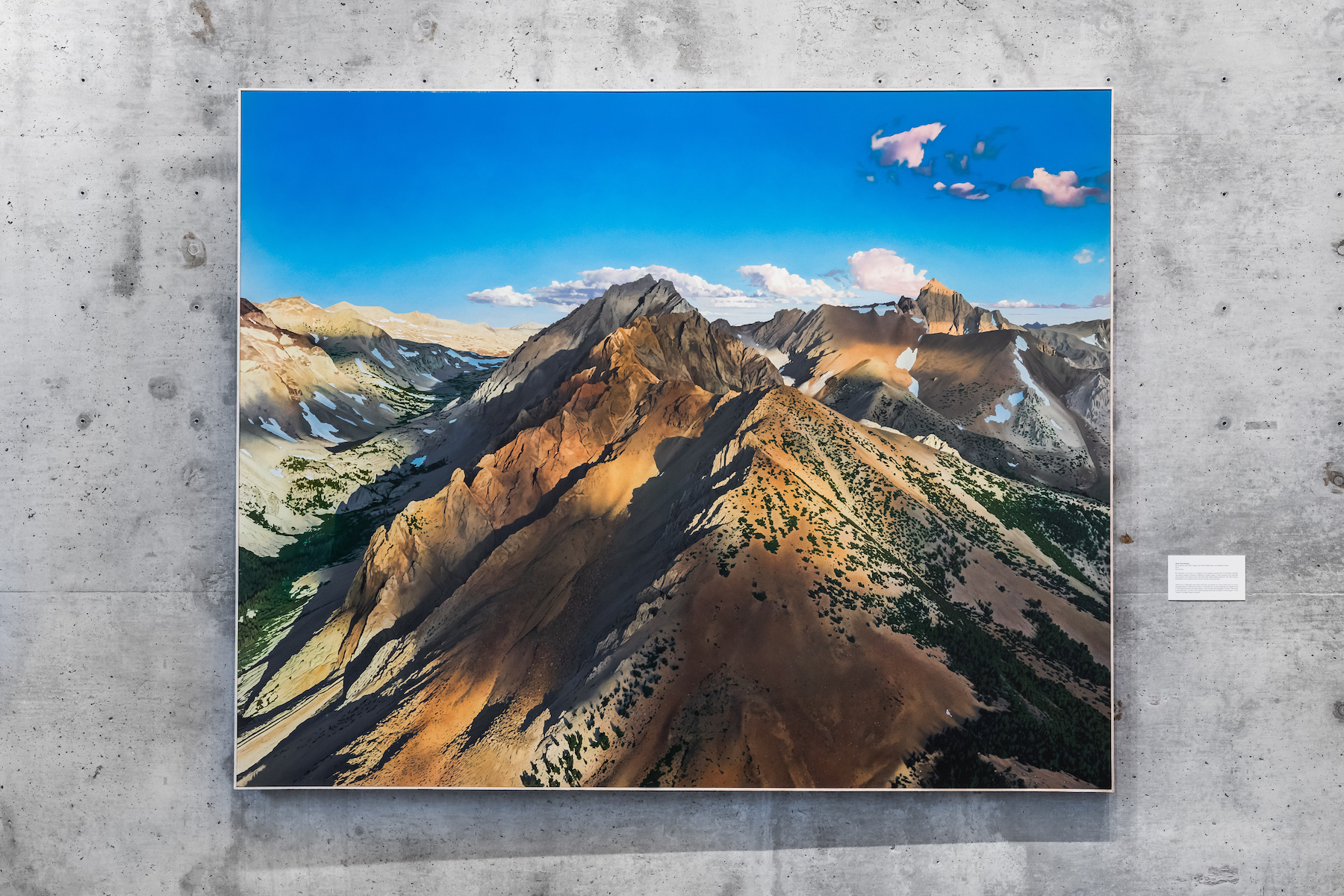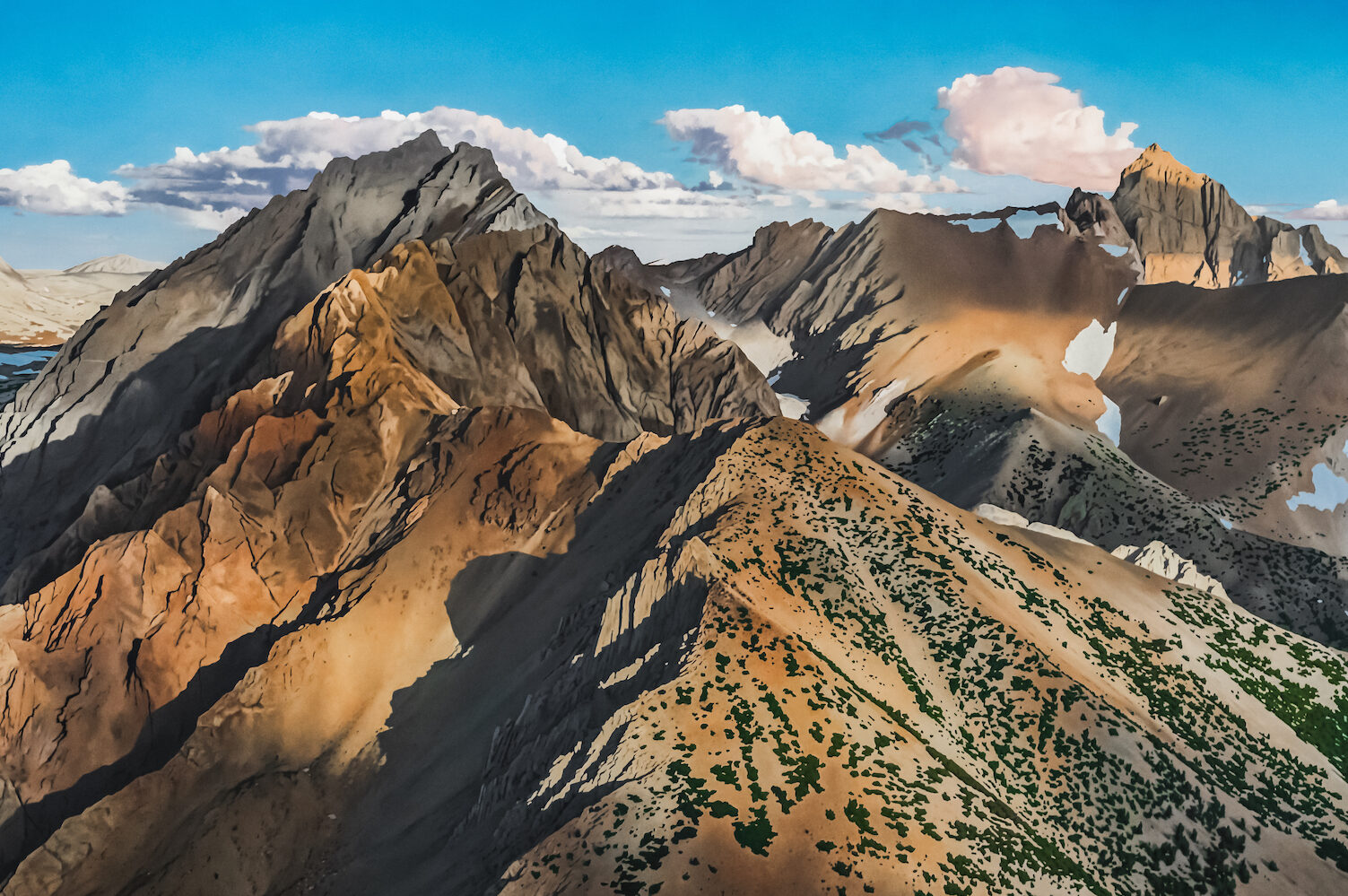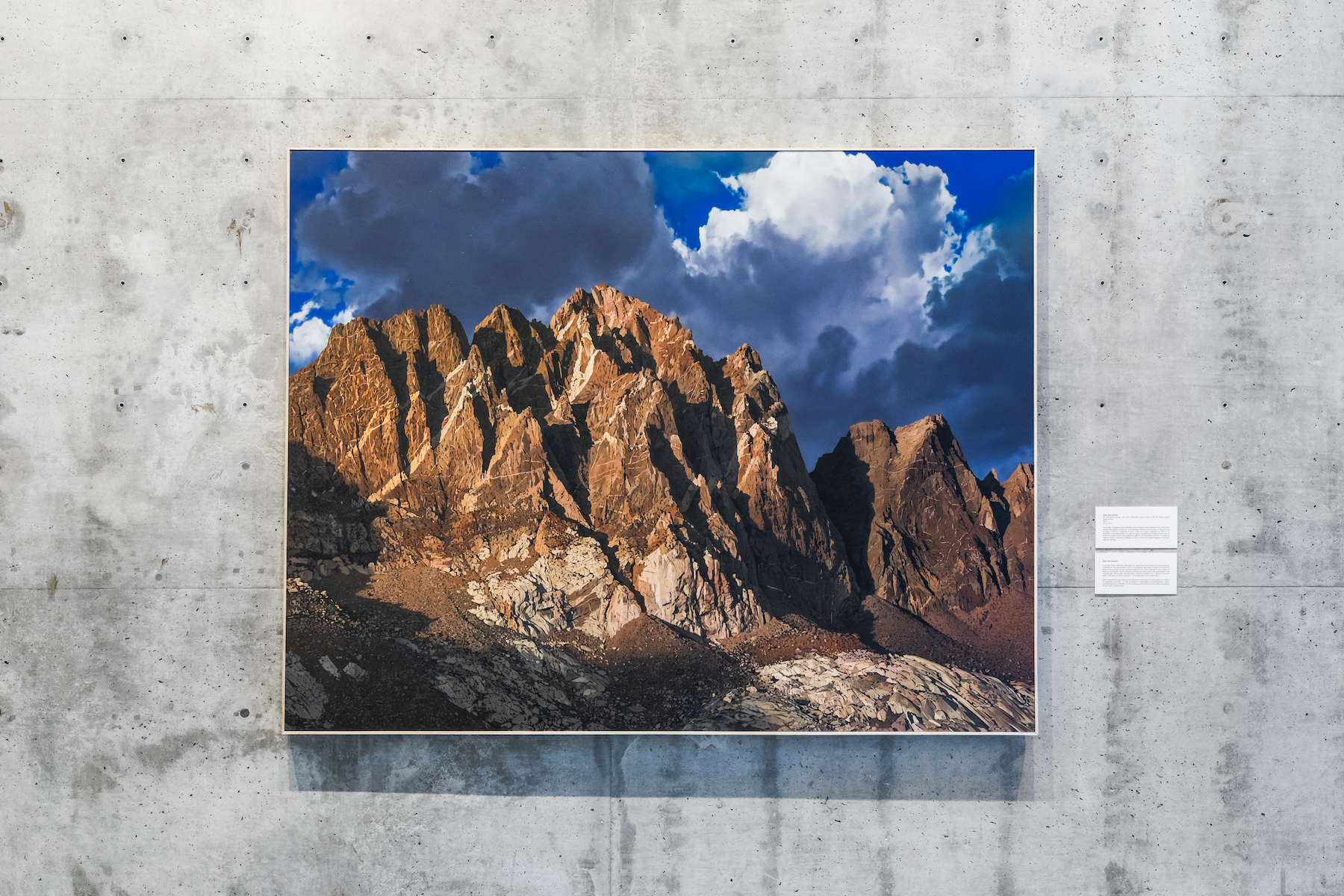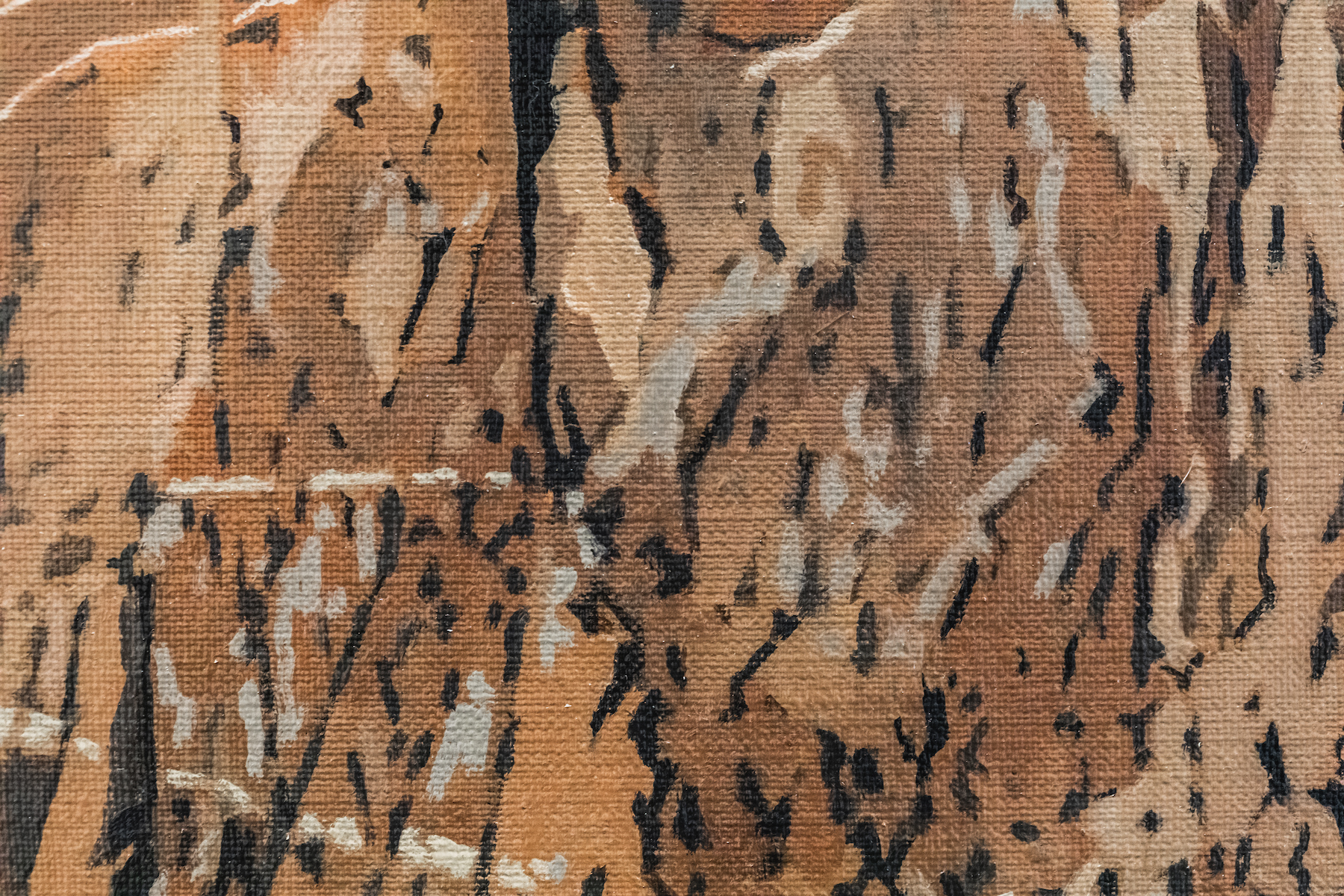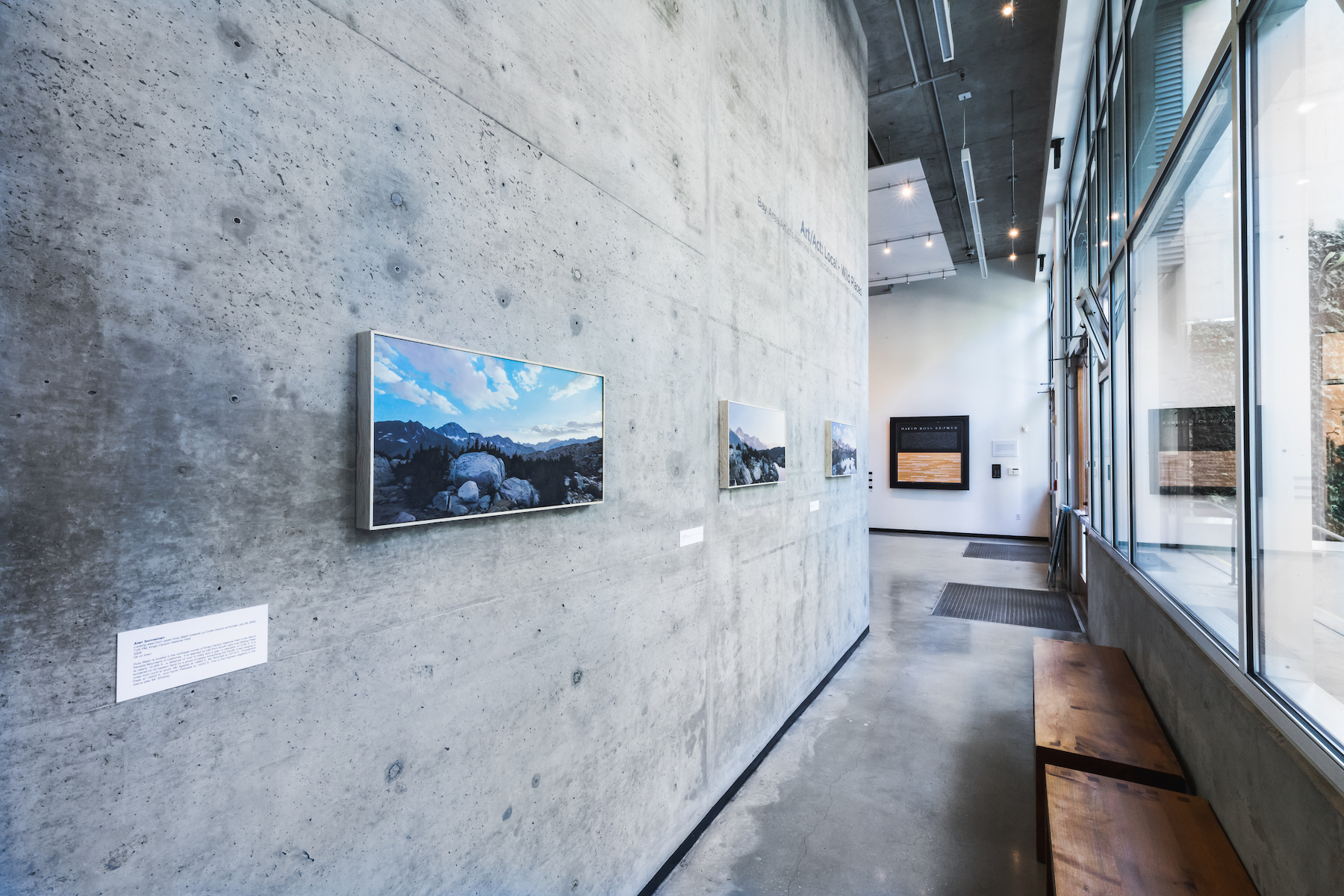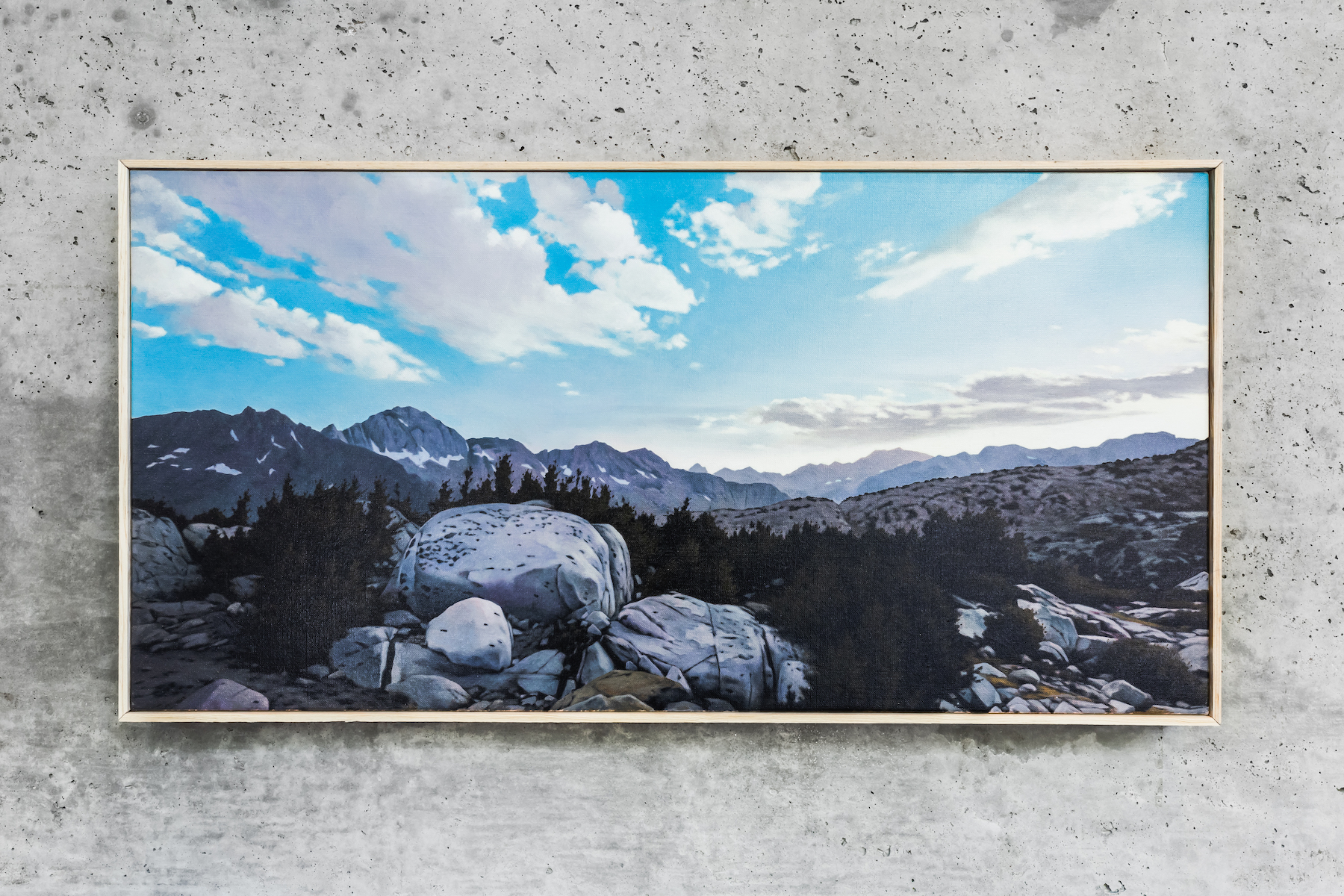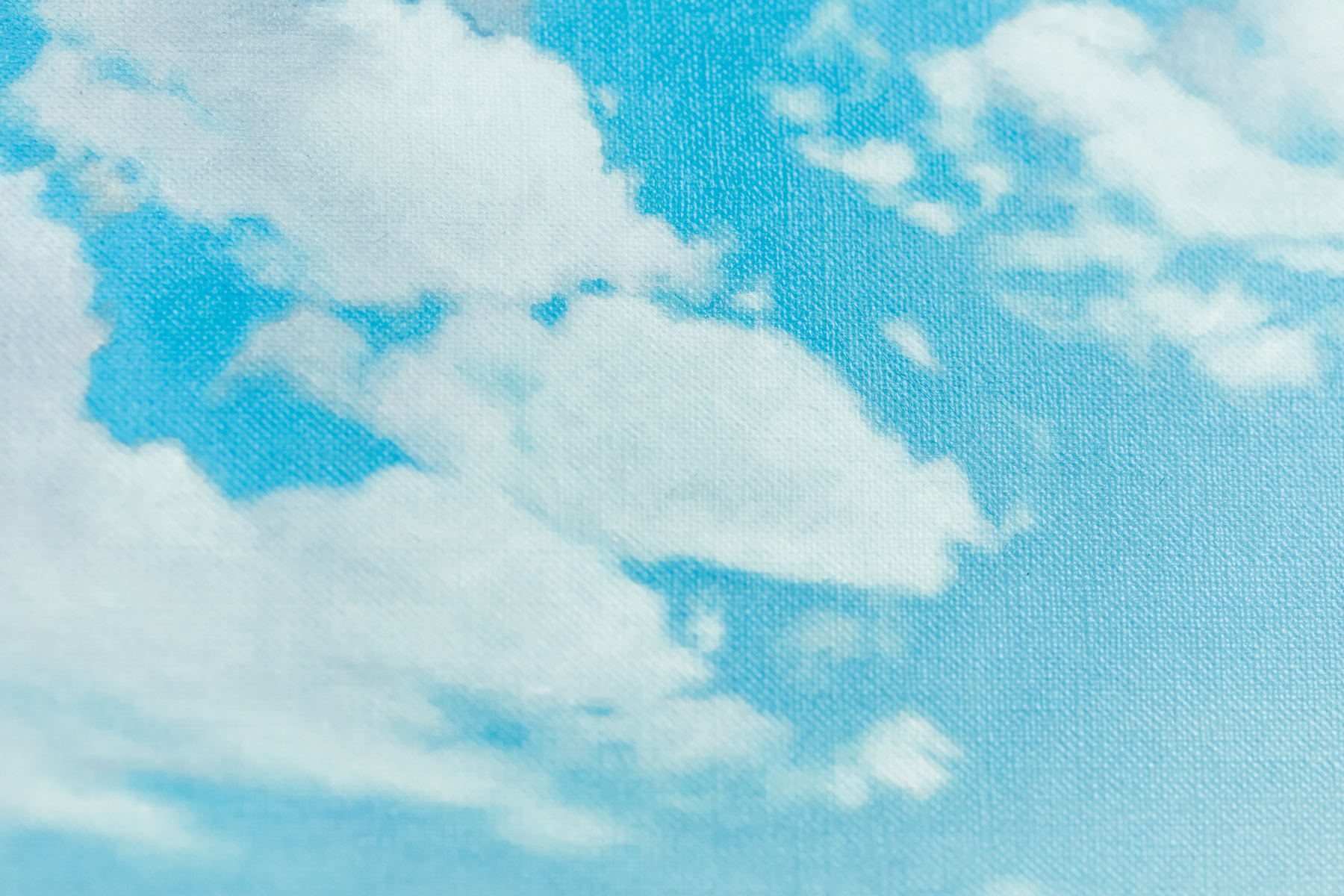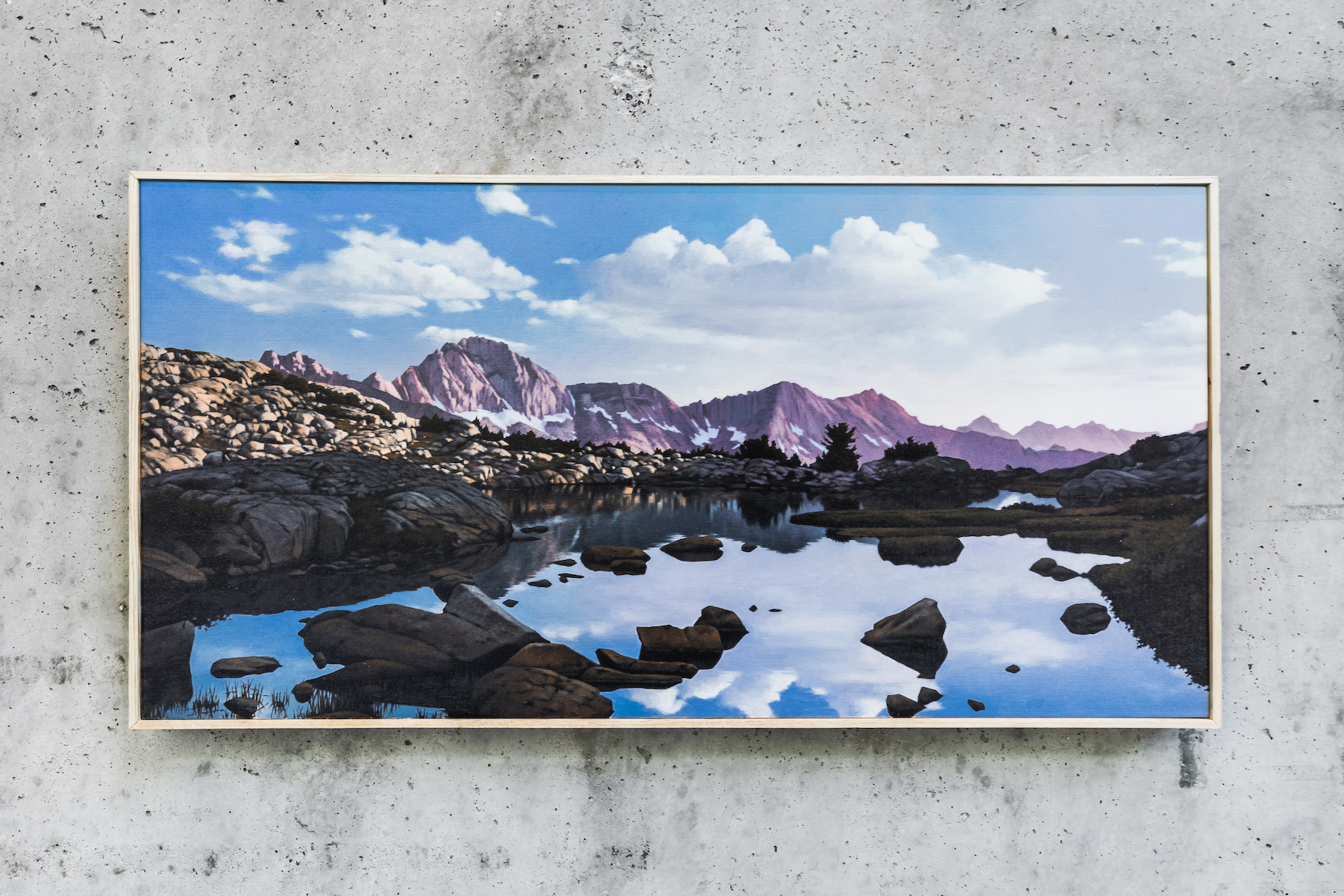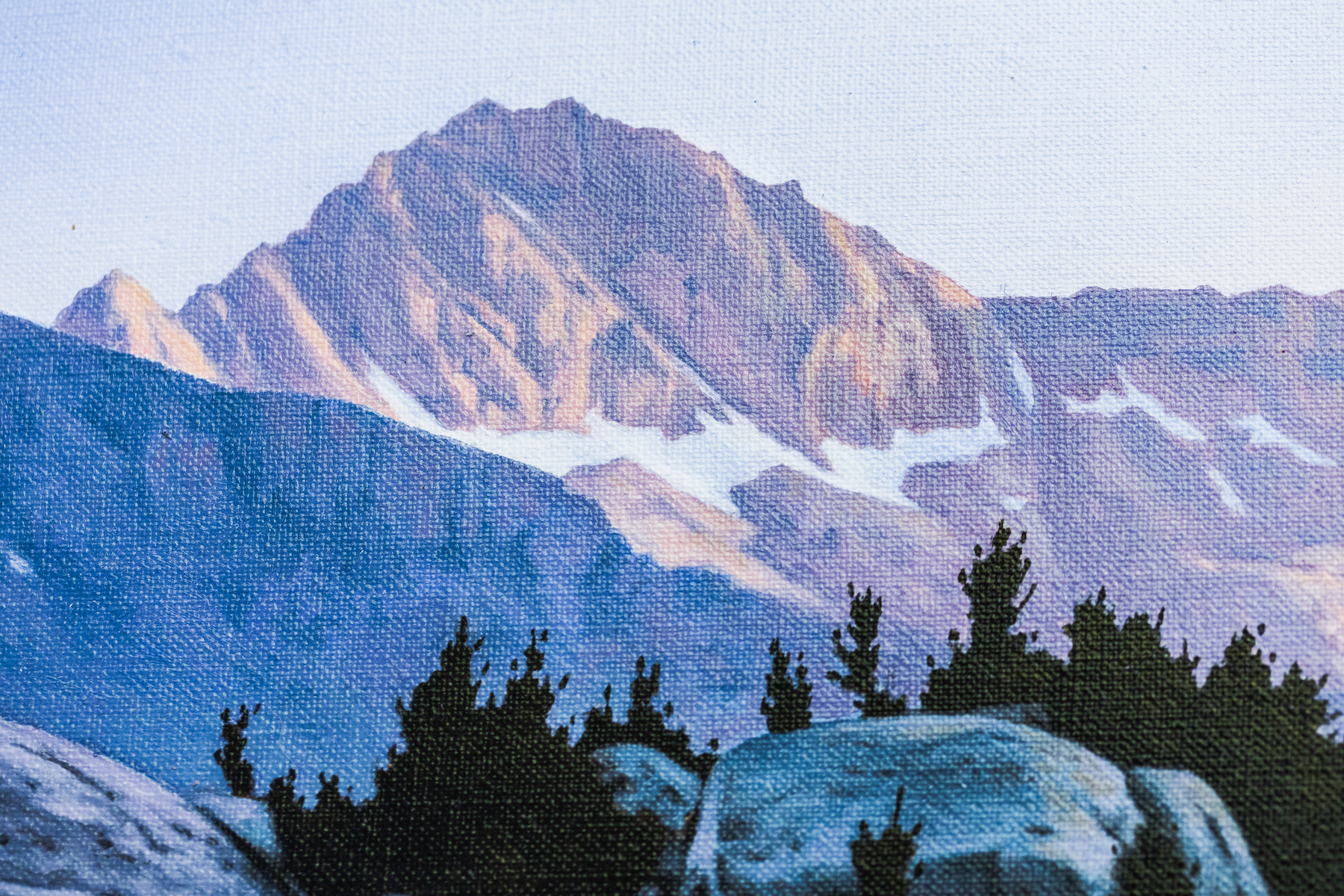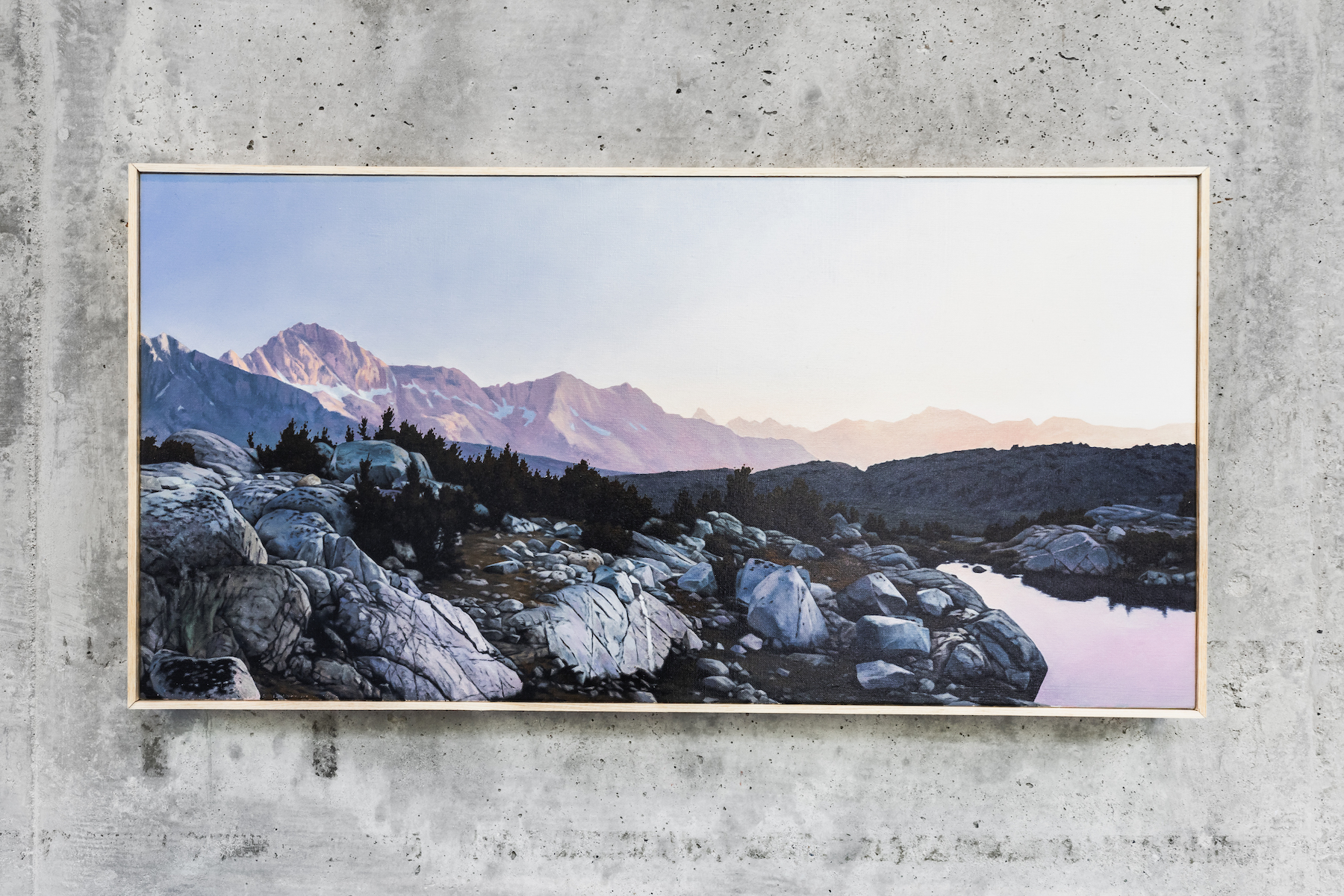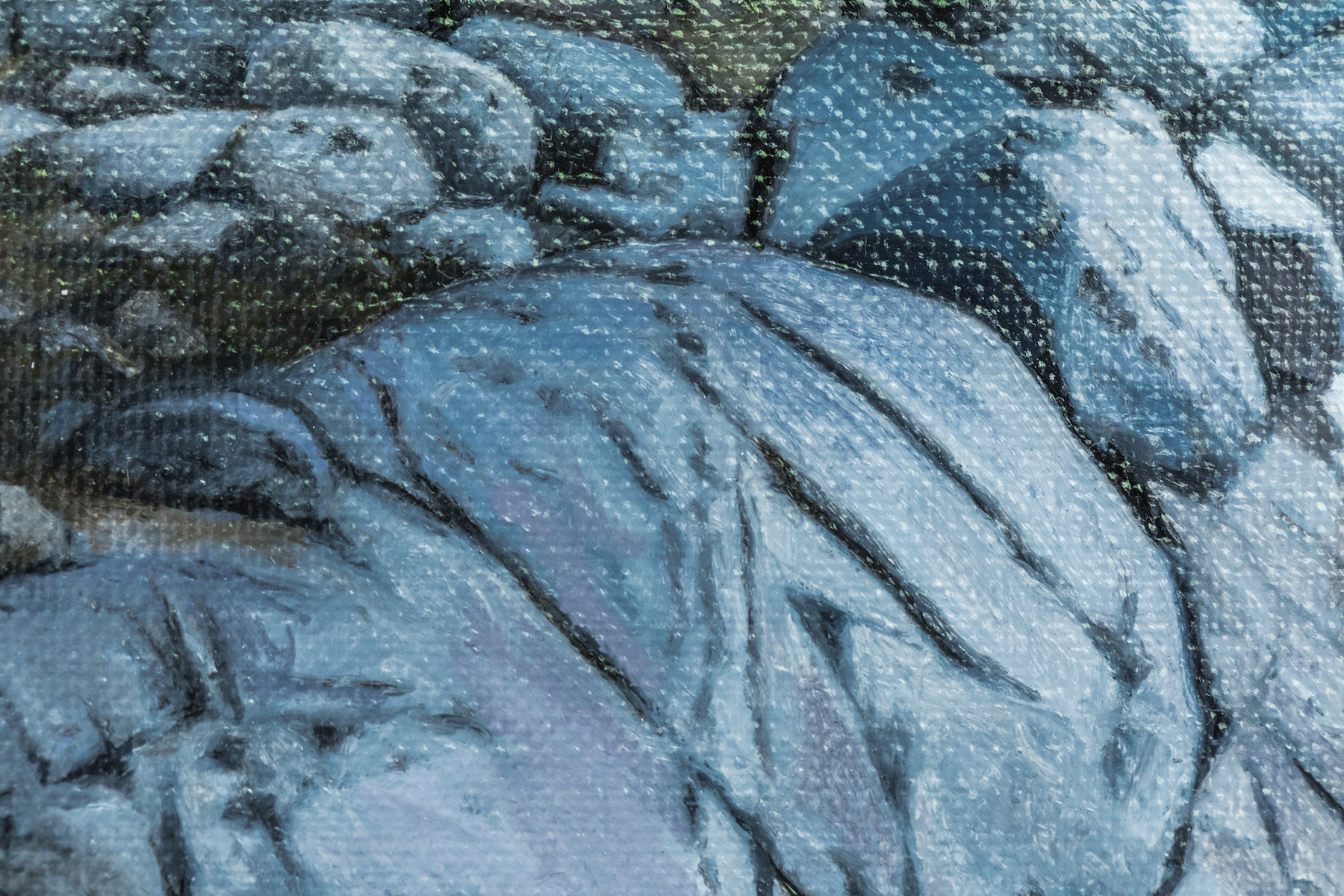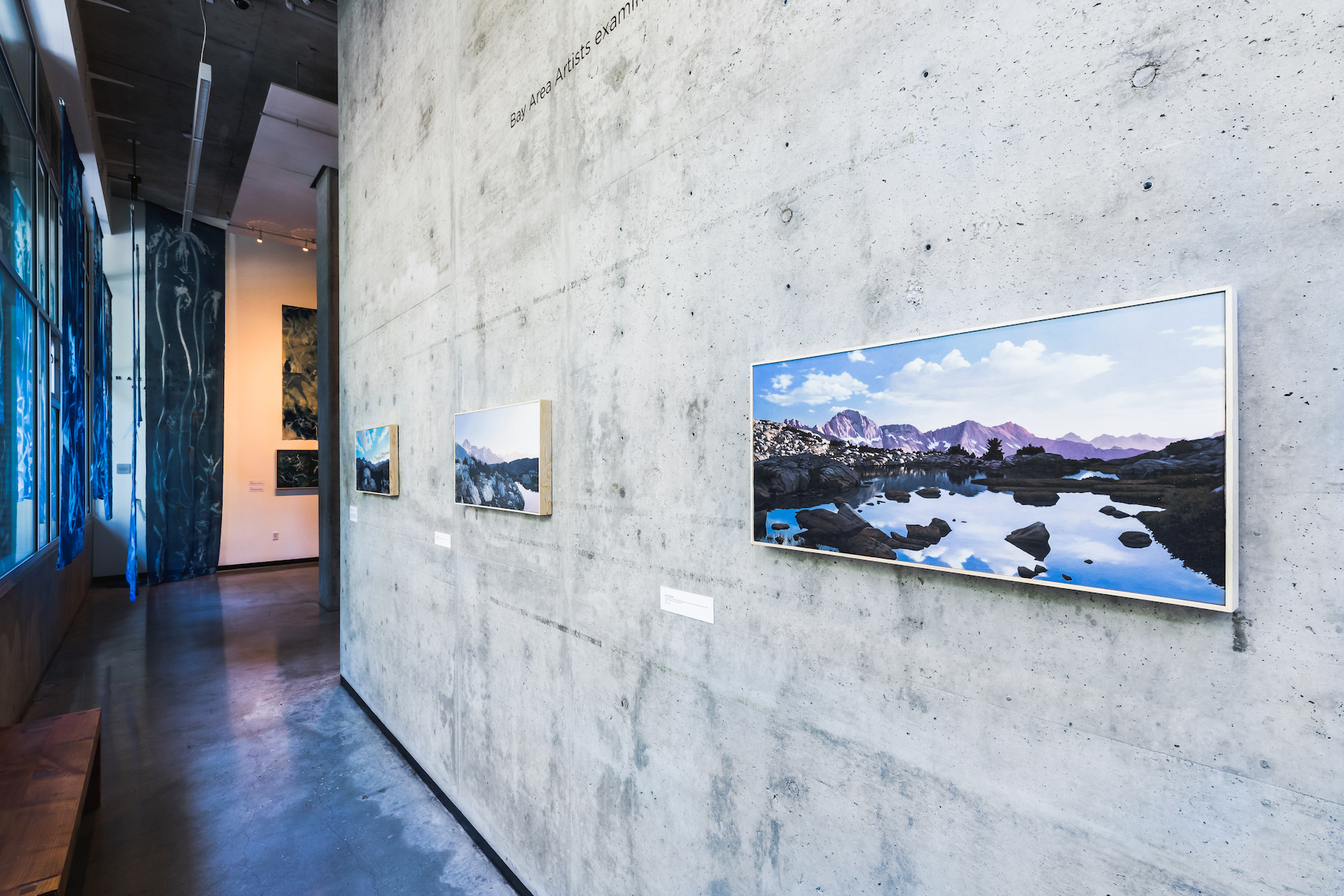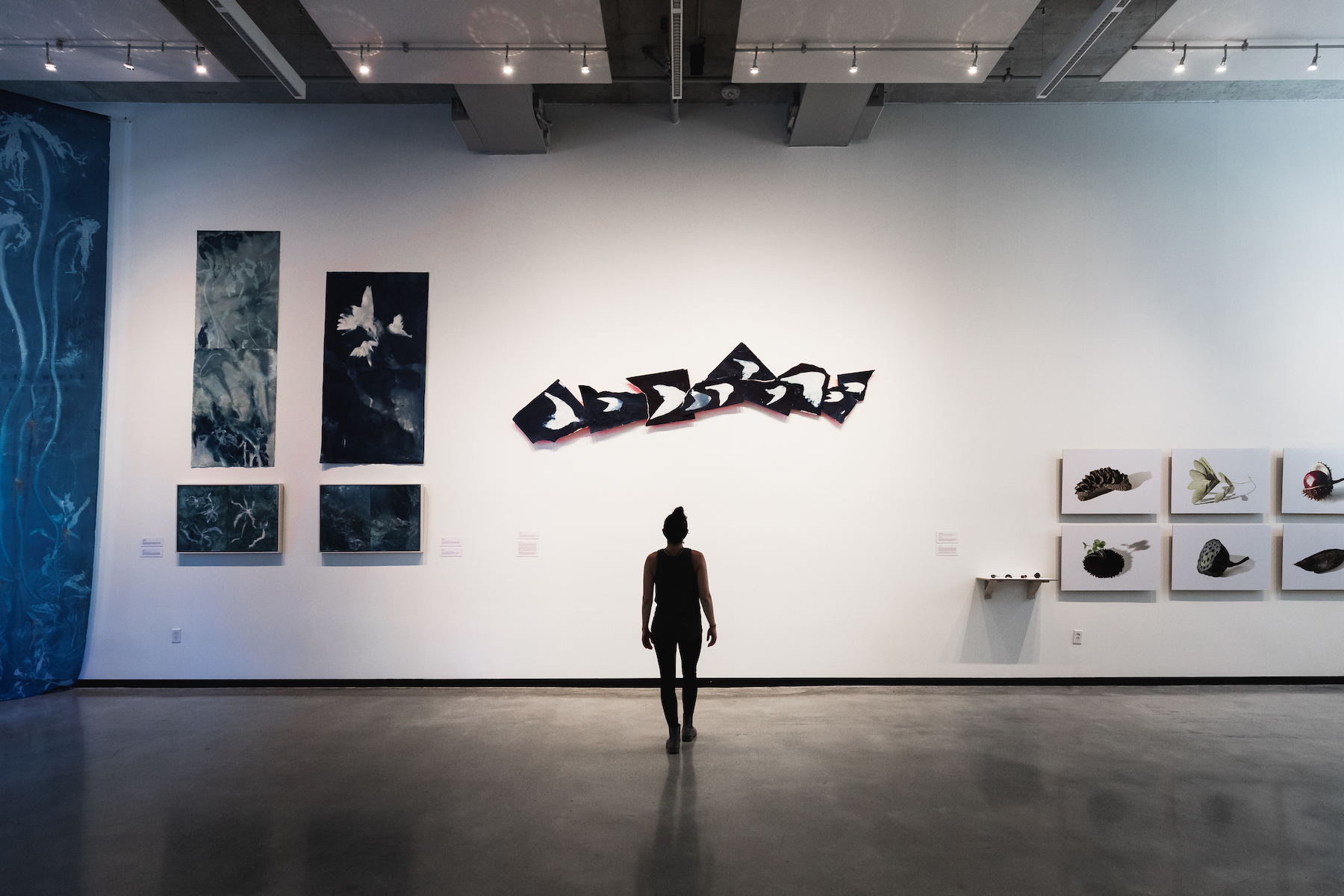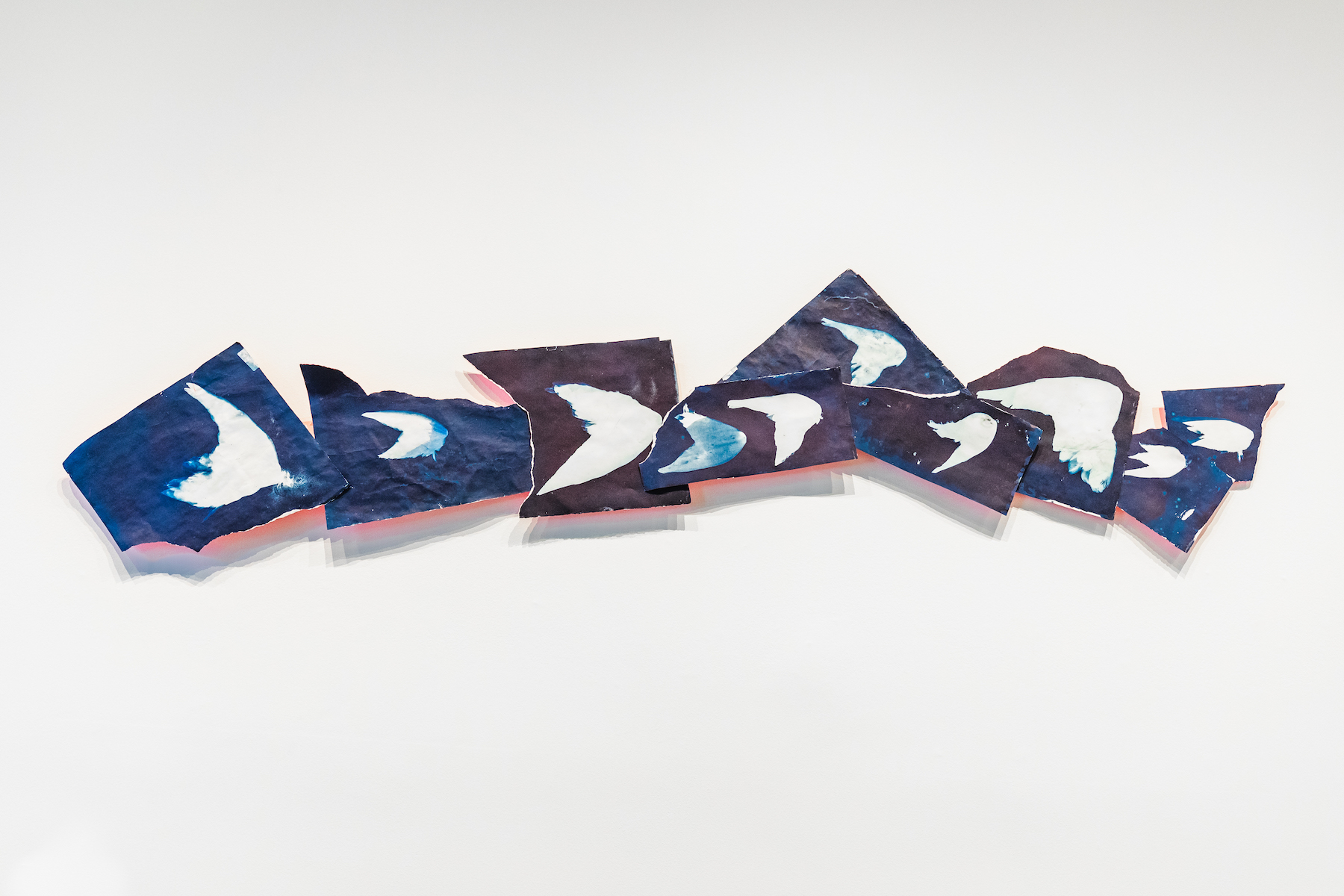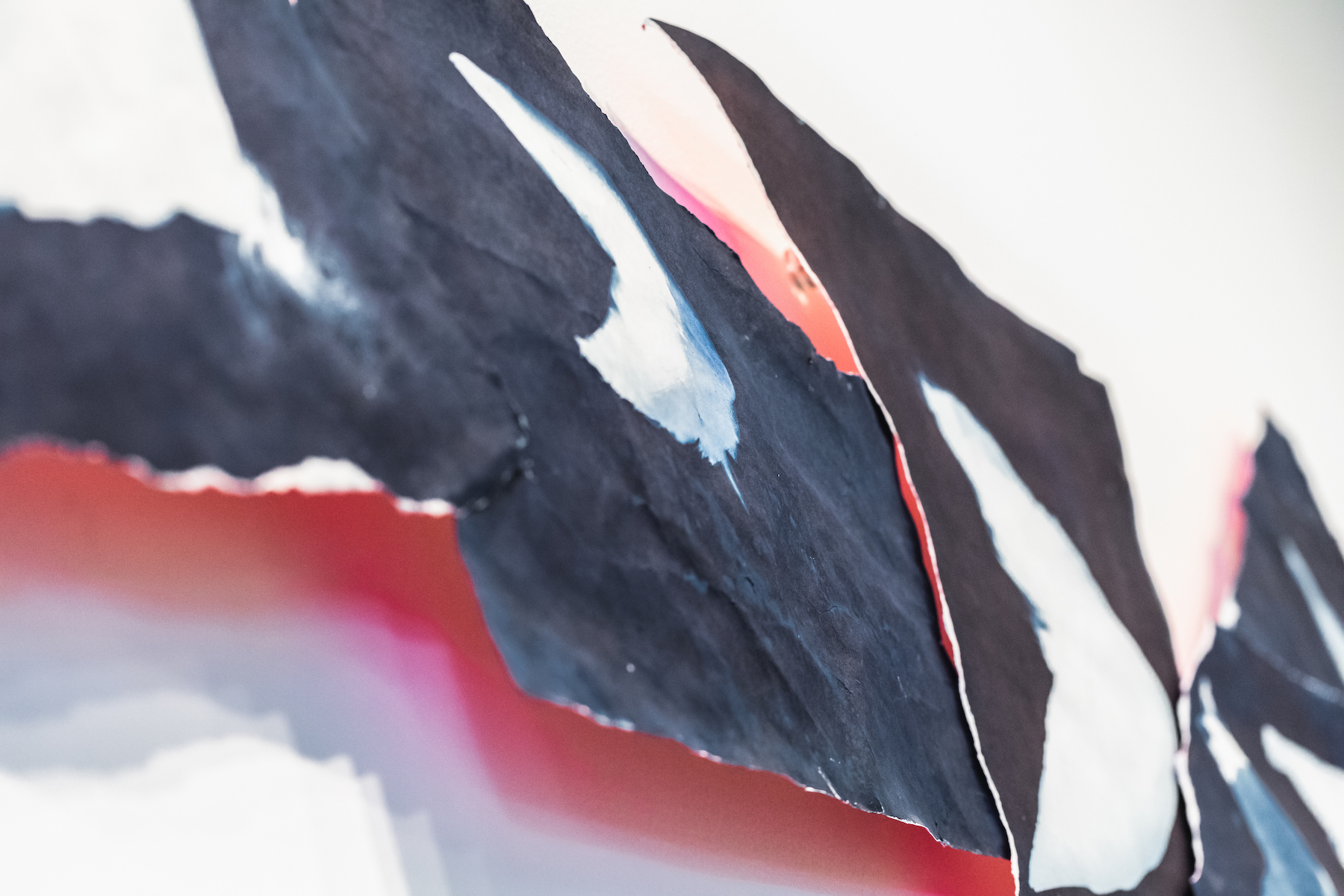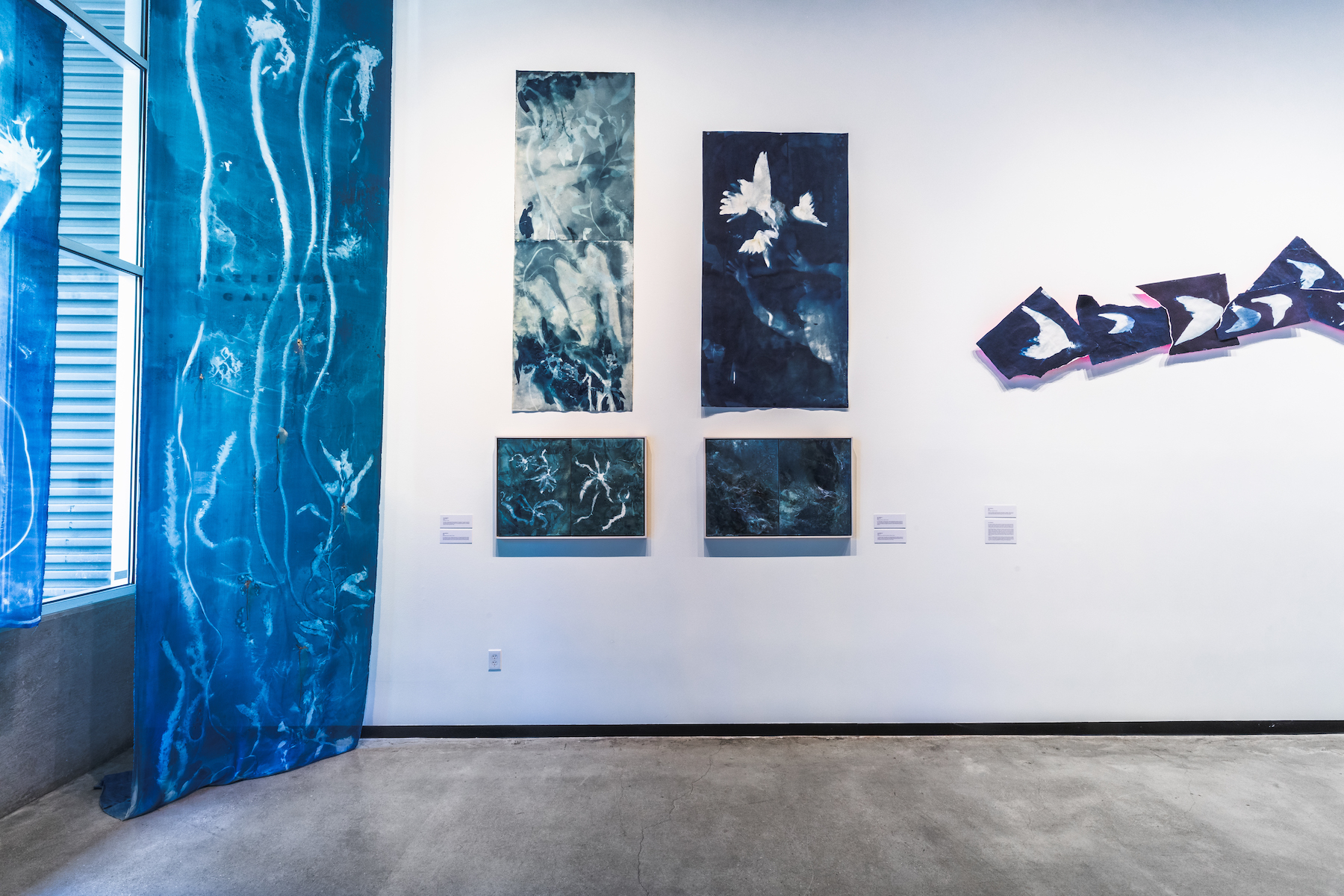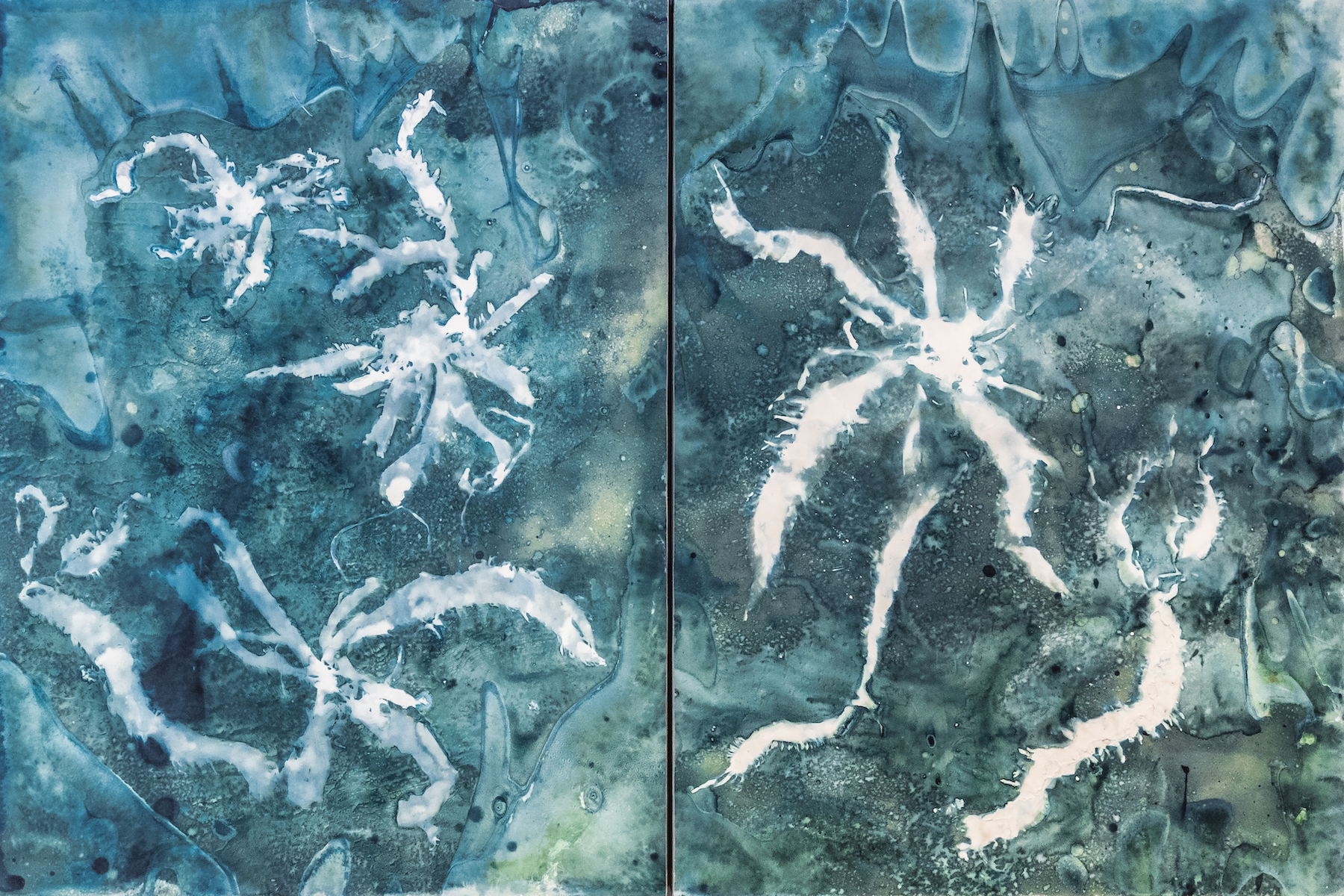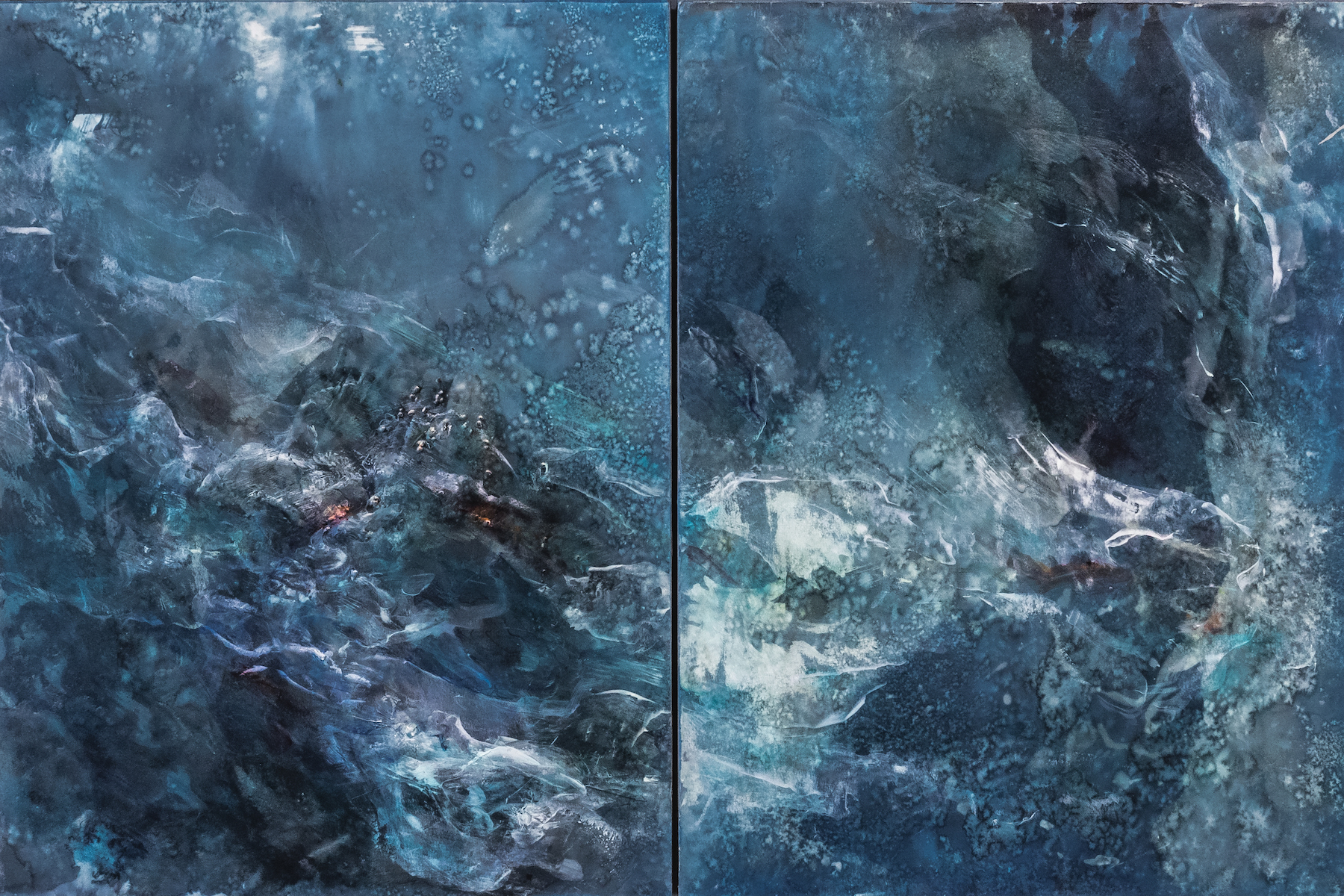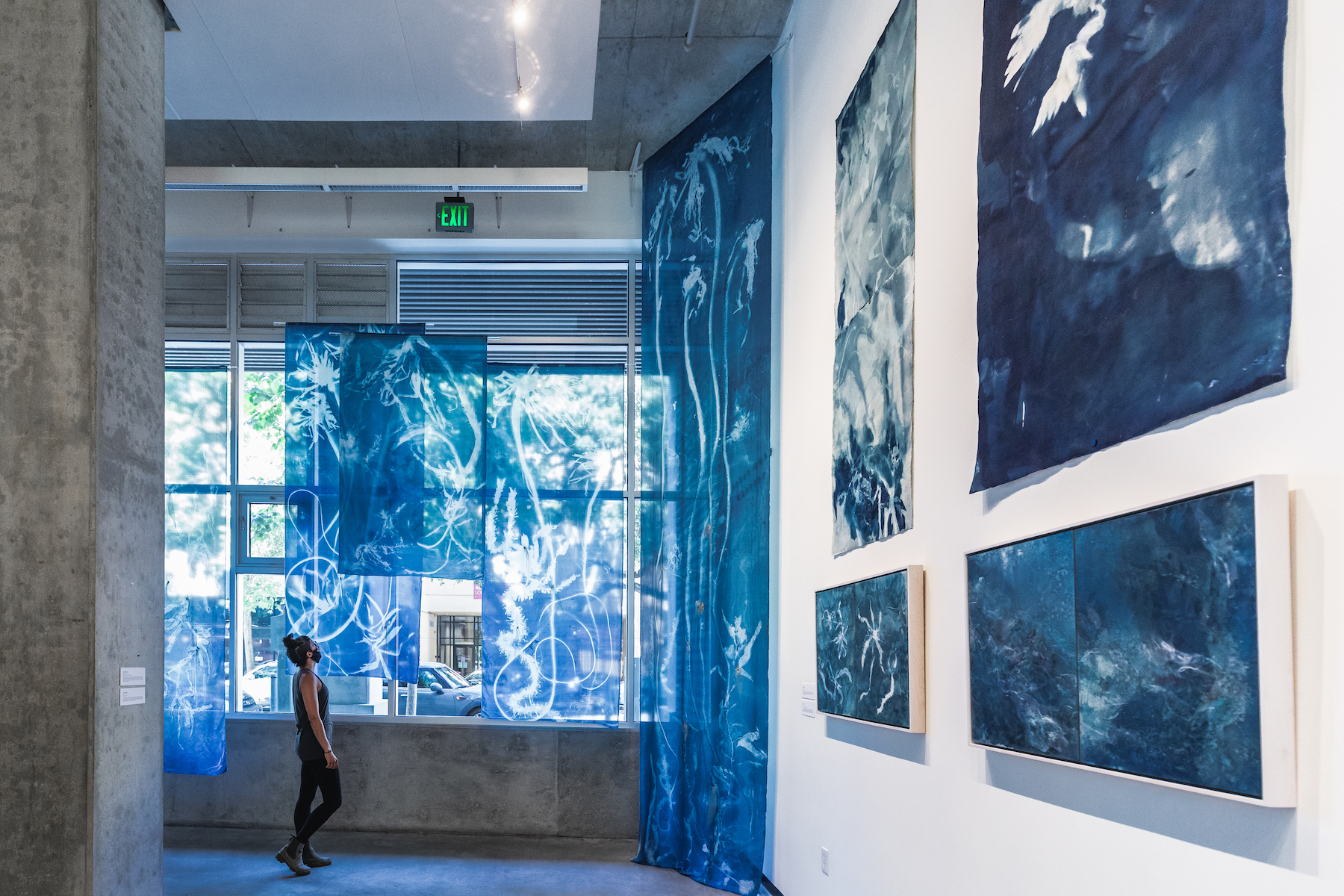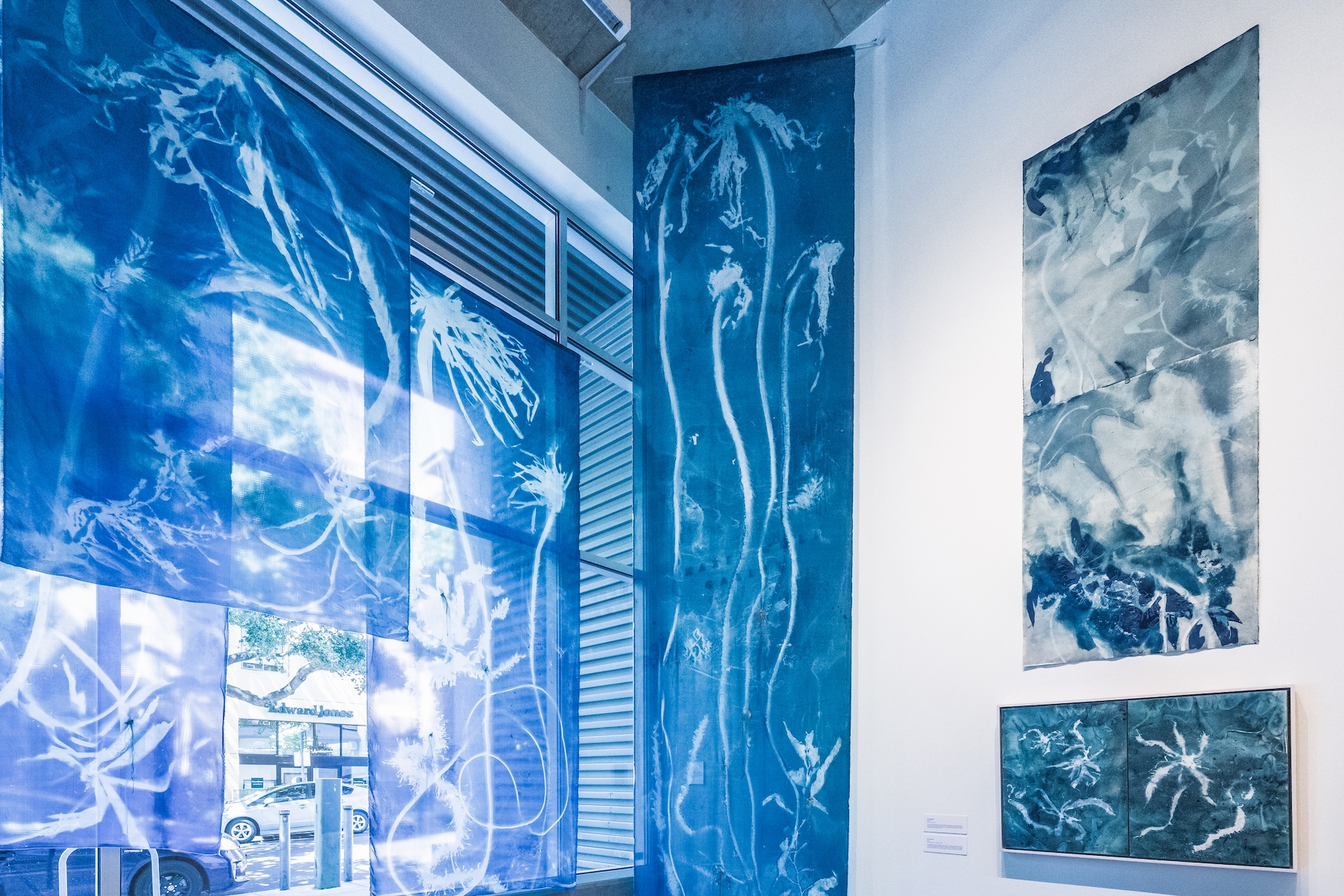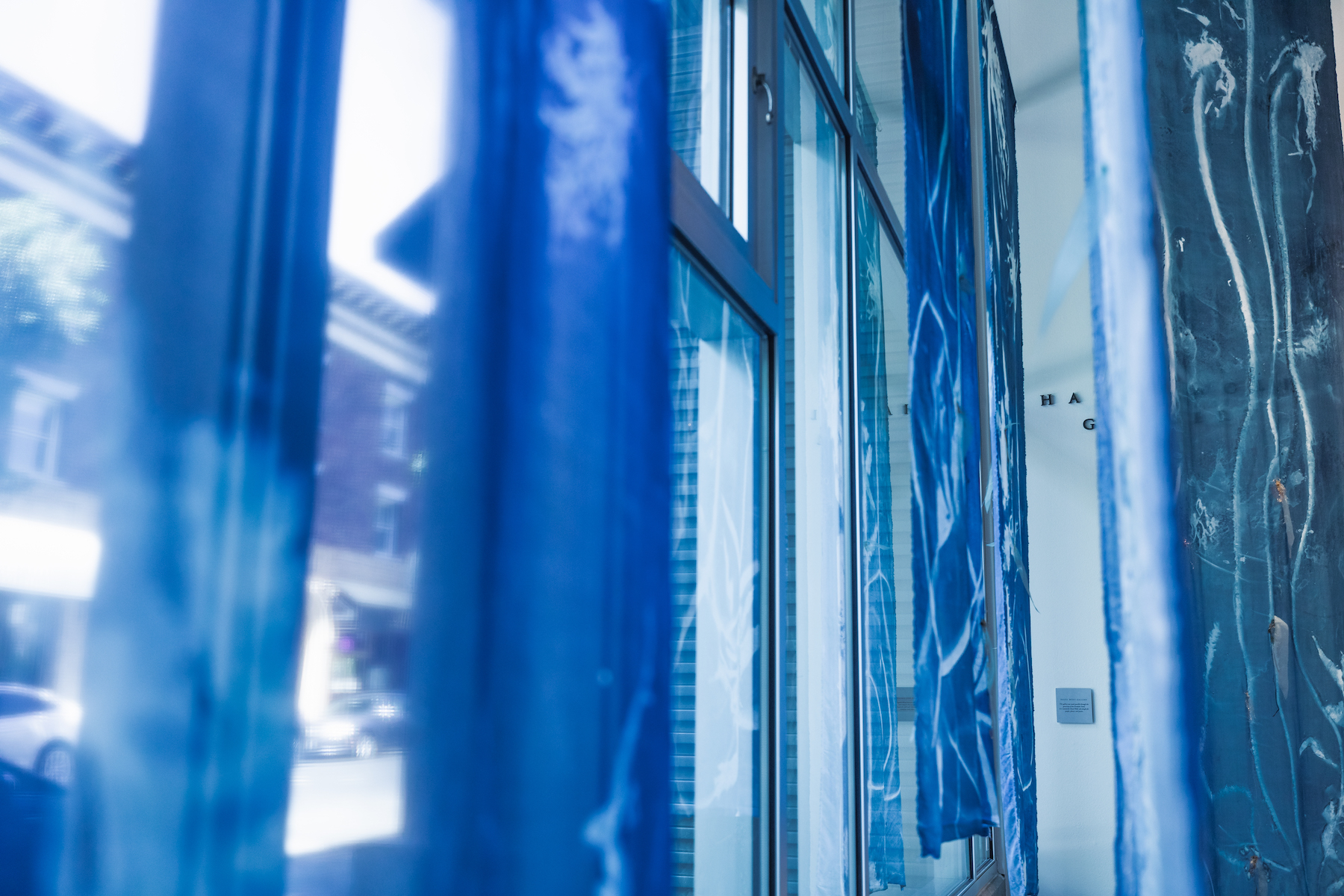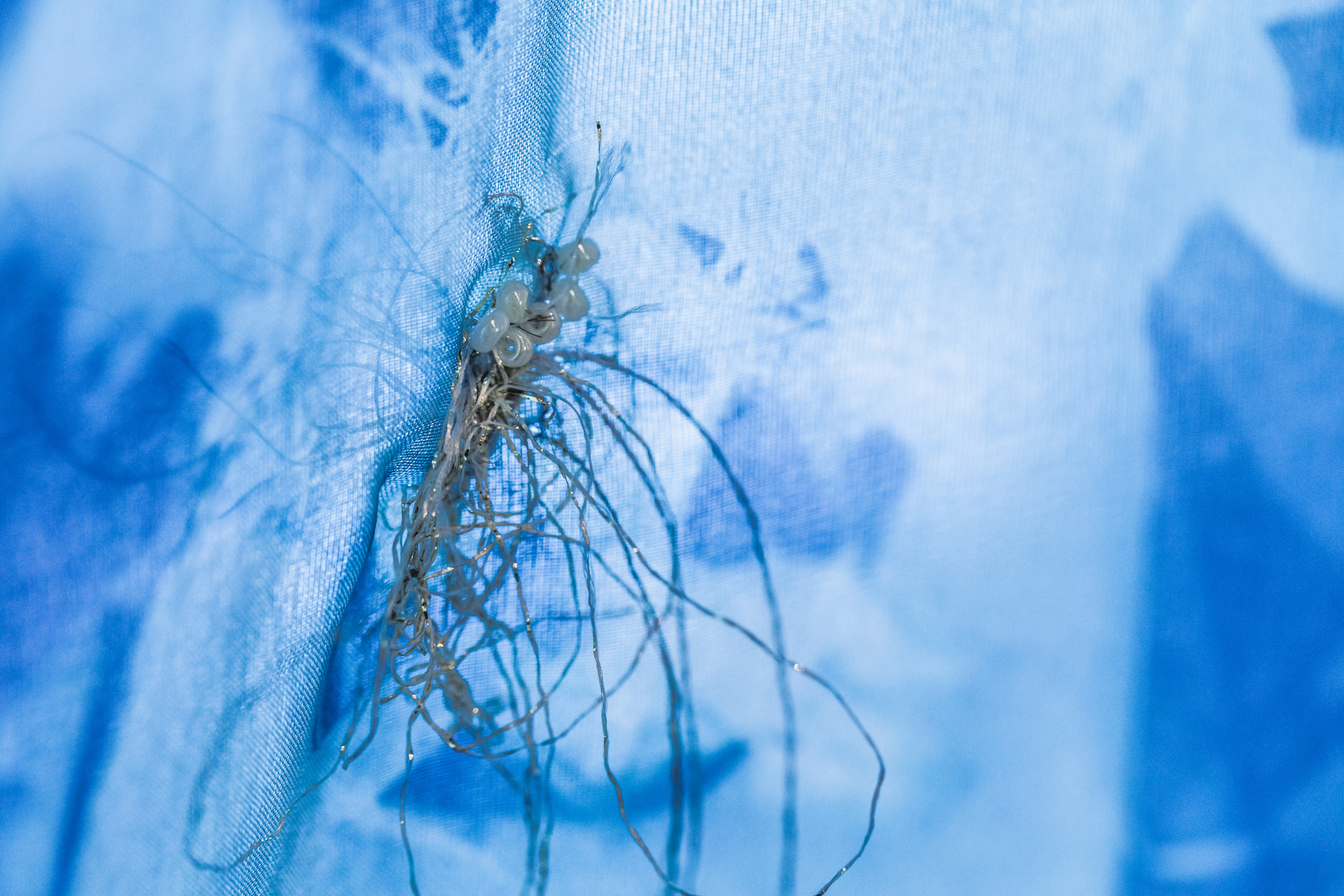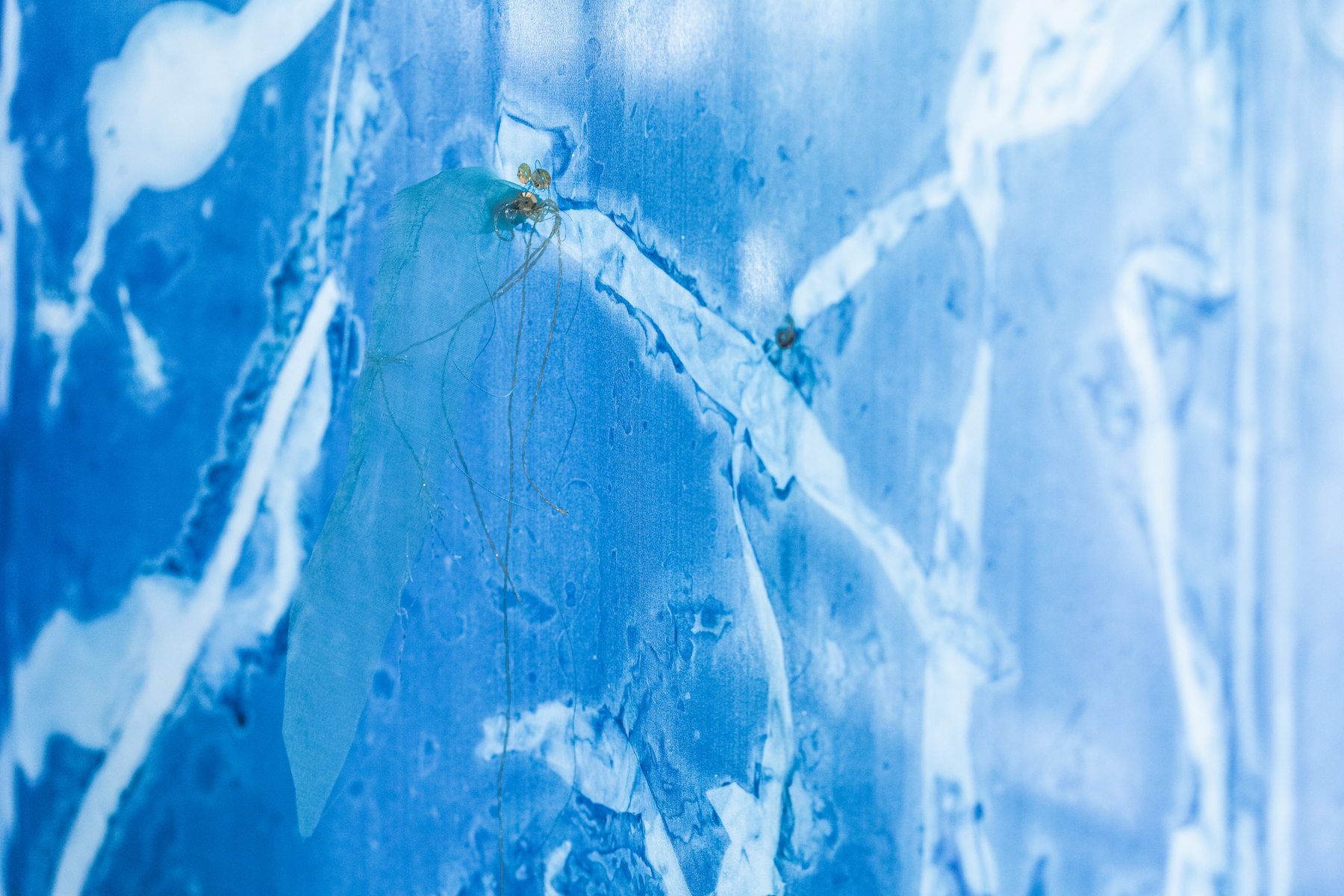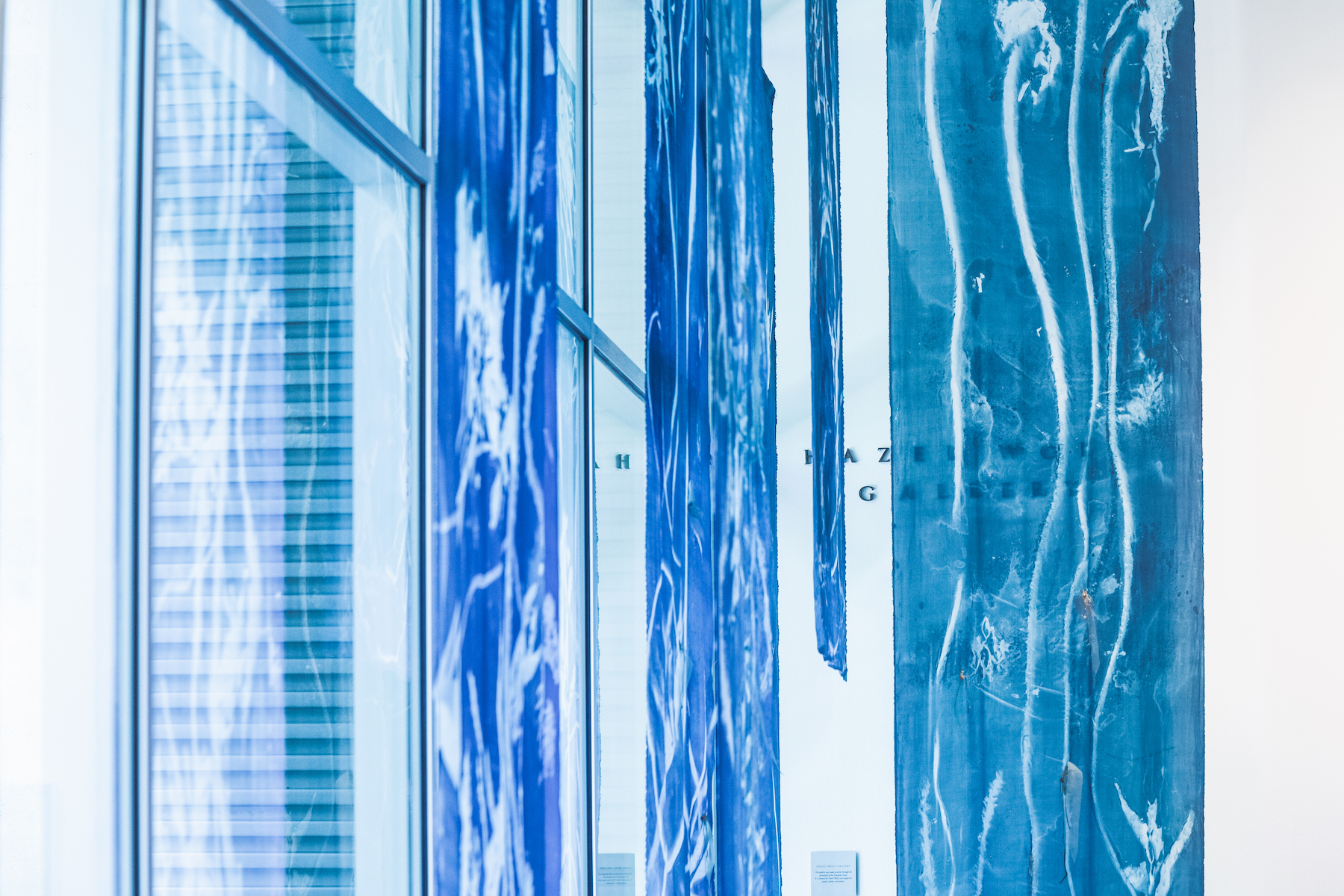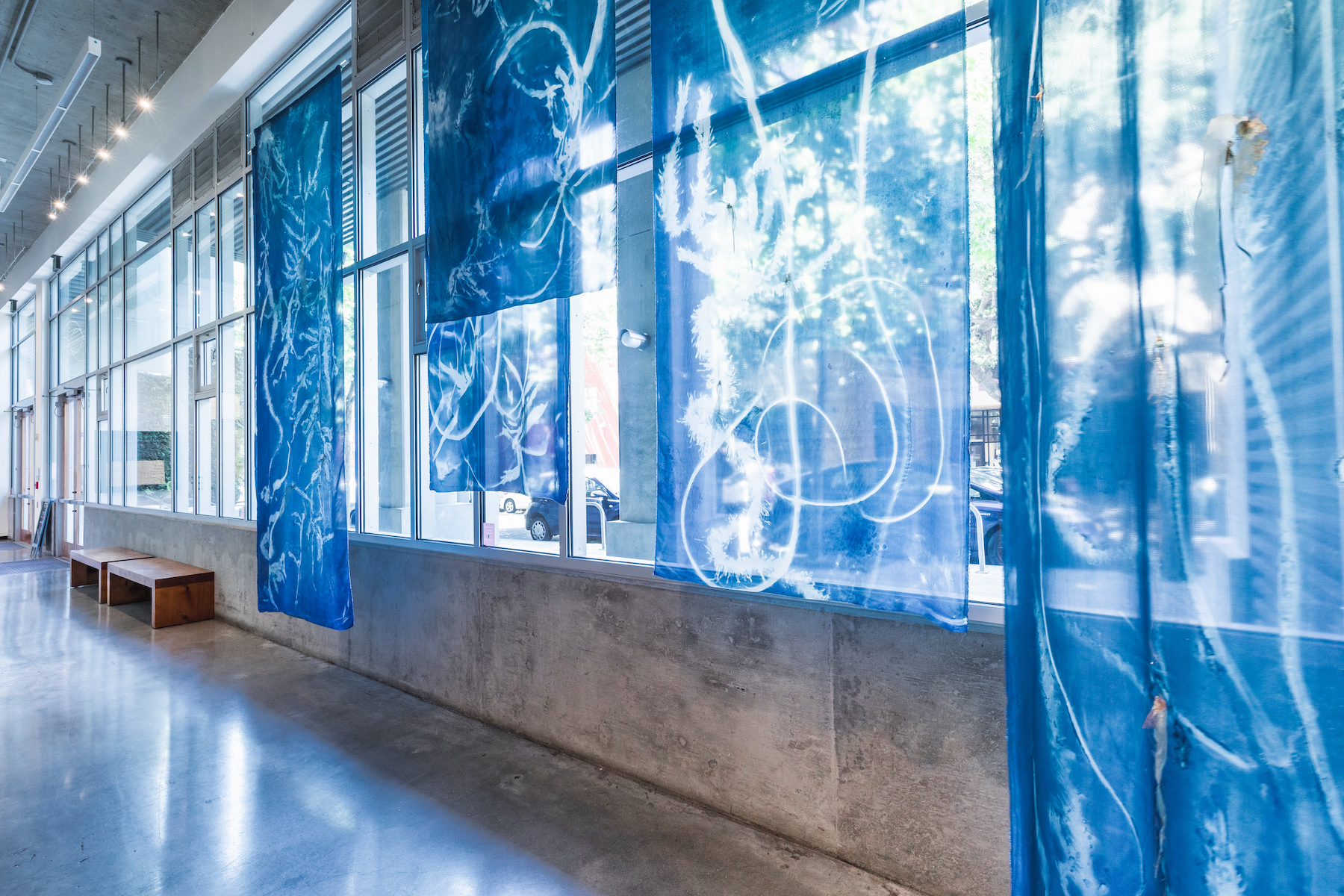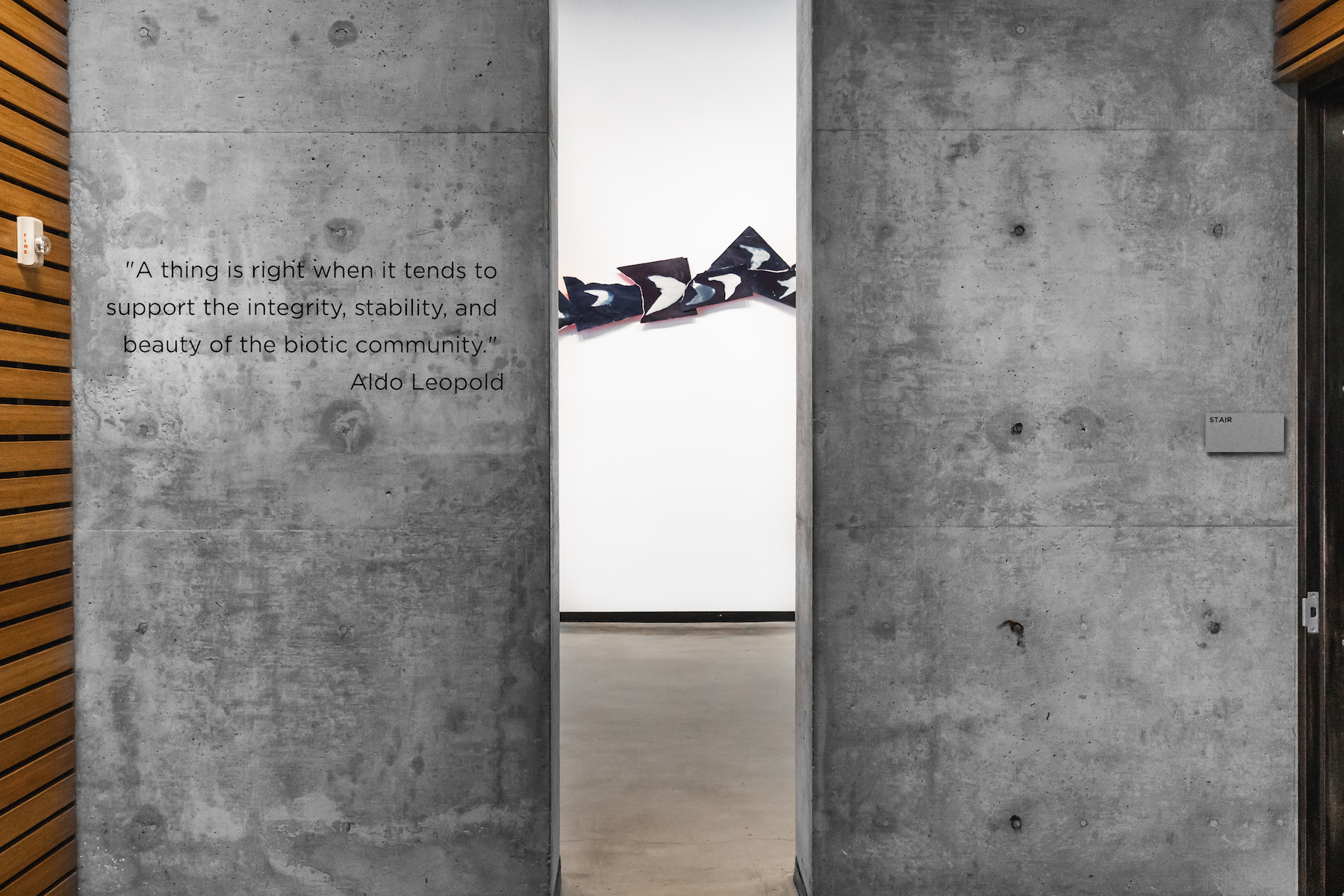Art/Act: Local – Wild Places
The wild places are where we began. When they end so do we. - David Brower
The David Brower Center was pleased to present Art/Act: Local - Wild Places, featuring the work of four Bay Area artists examining the importance of connecting people to wilderness in order for them to appreciate, understand, and ultimately protect our natural environment. Please view the digital gallery below (photography by Matt Garamy).
The work of these artists varies greatly, from the microscopic seed images of Hagit Cohen to the grandiose landscapes of Alan Sonneman to the evocative backyard paintings of Ellen Little to the mesmerizing seaweed cyanotypes of Ann Holsberry, but all is infused with the desire to celebrate nature - her beauty and her resiliency. These sacred places have taken on even more importance during the global pandemic by providing a respite from fear, calm in the chaos, and inspiration in the face of so much unknown.
Ellen Little
Ellen Little’s work is inspired and guided by the natural things she finds in her backyard and on her morning walks through San Francisco. She is fascinated by how nature adapts and evolves to fit into the built environment. By magnifying that which is small and temporary in nature – flowers, grasses, moths, dead birds and other ephemera, the images become powerful reminders of the beauty and importance of urban green spaces. The Goat Hill Series is inspired by Billy Goat Hill, a wild hillside near Ellen’s house that she cherishes and visits almost daily.
Below, learn more about Ellen Little with our physically distant artist video spotlight.
Hagit Cohen
Hagit Cohen's work fosters an awareness of the interconnectedness between humans and the natural world. Her large-scale images give small, overlooked, natural objects agency. She wants to show that even the most fragile elements in nature can take center stage and hold power in the campaign for the survival of life on the planet. Hagit creates contemplative, sacred spaces that evoke a ritual experience. She captures the interchange of our human made world and nature’s expression, and challenges others to think differently about the concepts of home and wilderness, large and small, active and still.
Hagit’s practice includes walking outdoors, looking, finding, and photographing elements of nature that attract her attention. Her process is intuitive. With time, she narrows her selection to reveal the narrative the selected images hold.
Below, hear from Hagit herself in our physically distant artist spotlight.
Alan Sonneman
In an age where artificiality dominates our experience, the pursuit of the real becomes a radical act. Alan Sonneman’s work is a conceptual pilgrimage of sorts. For the last 20 years every summer he has journeyed deep into the Sierra Nevada to find a place of serenity and solitude. There he stays for several days documenting his observations – the changing light, the weather, the immensity of the forms before him, a sense of time and place. Time seems to stand still there, it is a place apart from human action.
Alan re-presents through painting this pursuit of the miraculous. His art practice is a search for something universal – he has no interest in interpretation or self-expression. Alan’s paintings become a meditation on time, presence and transcendence, raising awareness of the world in which we live.
Below, learn more about Alan's background in our physically distant artist spotlight.
Ann Holsberry
Ann Holsberry’s artwork is a direct expression of her collaboration with natural phenomena. She seeks out wild places where she can work outdoors, incorporating the earth as both muse and material. Through the dynamic photographic process of cyanotype, Ann uses sunlight to capture direct impressions of plants, sand, and other found objects from her surroundings. Due to the iron-based chemistry involved, a deep Prussian blue predominates.
From gathering materials to exposing the final artwork, the entire process is intensely physical. Holsberry begins in nature, where she searches for specimens to document such as endangered sea kelp beds off the California coast. She then moves to the darkroom, where she paints, drips, and pours light sensitive emulsion onto paper or fabric. Once it has dried, she brings the prepared substrate to a site-specific location, shielding it from the sun with a tarp while she collects materials. She then works in darkness under the tarp to lay the found objects (and sometimes her own body) onto the fabric or paper. When the tarp is removed and the surface is exposed to the sun, objects blocking the light leave a white unexposed area behind. The resulting silhouettes have both clarity and mystery against the deep blue background.
Since Ann composes her artwork mostly in darkness, and is often at the whim of weather conditions, she relinquishes some control of the outcome and embraces chance and the unexpected. “My art practice is continuously propelled into new, experimental directions as a result of working with unpredictable elements in interconnections around me, and inspires in me a profound appreciation for my small place in the natural world.”
Learn more about Ann's work in her artist spotlight below.
Art/Act: Local - Wild Places is made possible through the generosity of the Berkeley Civic Arts Program & Civic Arts Commission, East Bay Municipal Utilities District and North Berkeley Wealth Management.
[cover image detail: installation of Ann Holsberry's cyanotypes on silk, Sea Kelp Forest series, 2018-2020. Photo by Matt Garamy.]

